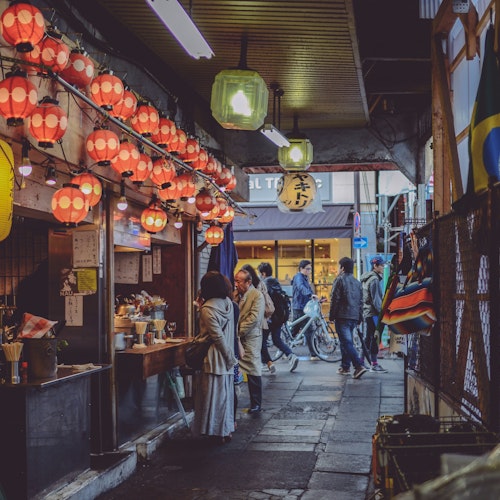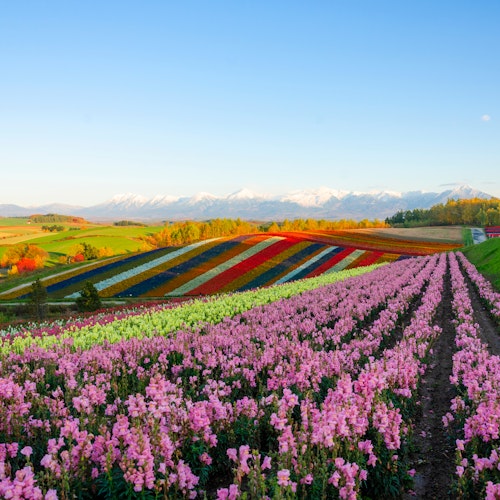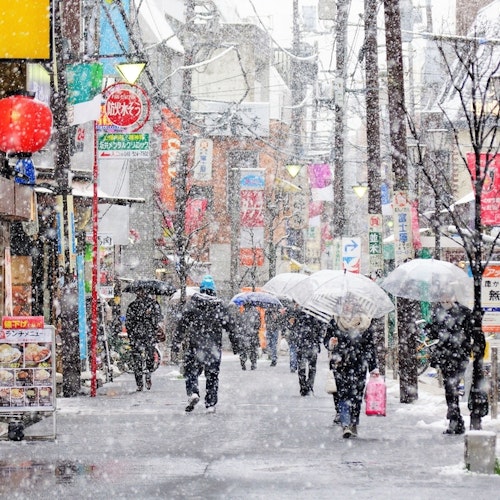
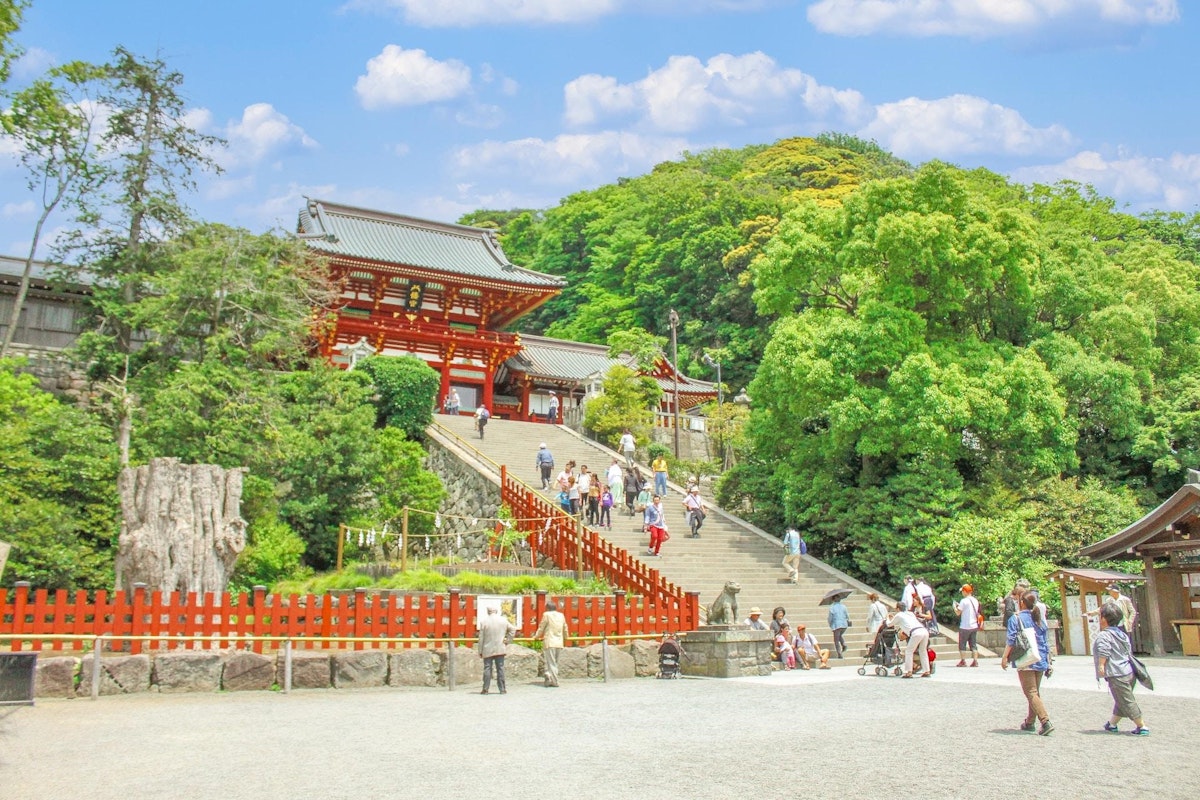
As you set foot in the Land of the Rising Sun, prepare to be transported through time and space on an extraordinary journey to the heart of Japan's rich cultural heritage. With a wealth of ancient temples and sacred shrines dotting the picturesque landscapes and bustling cities, you'll find yourself captivated by the stories and legends that have shaped the nation's unique spiritual identity.
Each of these awe-inspiring sites offers not only a window into the past but also a sanctuary for reflection and spiritual nourishment. From the ethereal beauty of Kyoto's golden pavilions to the iconic vermilion torii gates nestled in enchanting forests, these must-visit temples and shrines beckon you to explore their hallowed grounds and delve into the captivating narratives that have been woven into the very fabric of Japan's history.
So join us as we journey to the far corners of this enchanting land, seeking out the most captivating and awe-inspiring temples and shrines that Japan has to offer. Each step of the way, you'll find yourself immersed in a world of divine connections, rich traditions, and unparalleled beauty that will leave you longing for more. Let the adventure begin.
Nestled atop a verdant hill in the ancient capital of Kyoto, Kiyomizu-dera temple stands as a testament to the timeless beauty of Japan's spiritual heritage. As you explore the temple grounds, you'll be captivated by the fusion of nature, history, and spirituality that makes Kiyomizu-dera a must-visit destination.
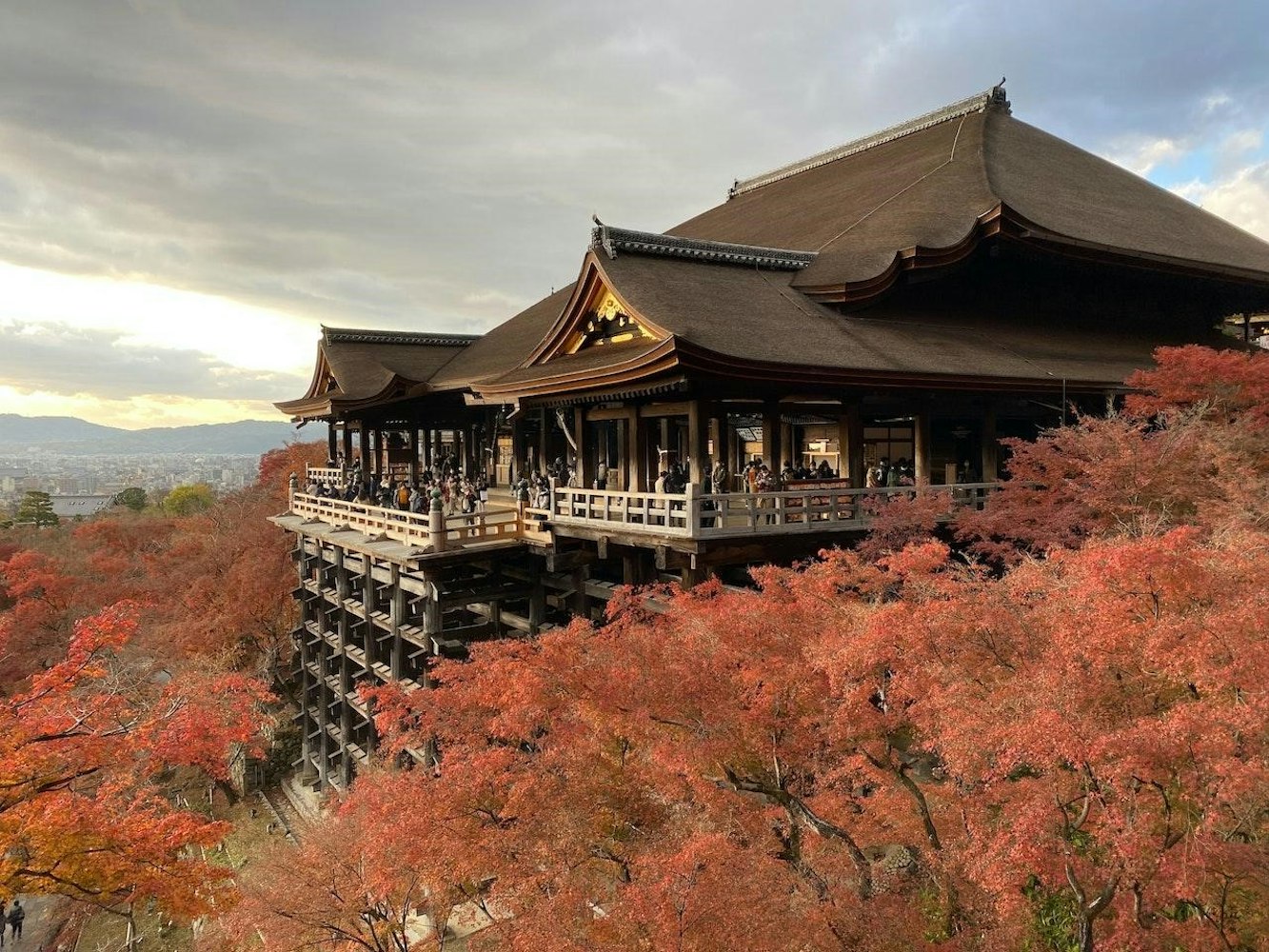
Founded in 778 by the Buddhist monk Enchin, Kiyomizu-dera has stood the test of time, captivating visitors for over a millennium. The temple derives its name, which translates to "Pure Water Temple," from the nearby Otowa Waterfall. Legend has it that Enchin was guided to the site by a divine vision of the bodhisattva Kannon, who instructed him to build the temple on the sacred waters that flow from the nearby hills.
One of the most iconic features of Kiyomizu-dera is its wooden stage, which juts out from the main hall, offering an unparalleled vantage point from which to take in the panoramic views of Kyoto. As you stand on the stage, you'll be captivated by the lush foliage that envelops the temple and the cityscape stretching out below.
The architectural prowess of Kiyomizu-dera is further exemplified by the fact that not a single nail was used in the construction of the main hall. This remarkable achievement showcases the ingenuity and skill of Japan's ancient craftsmen.
As you wander the temple grounds, be sure to visit the Jishu Shrine, a charming Shinto shrine dedicated to Okuninushi, the god of love and matchmaking. Here, you can take part in a time-honored ritual by attempting to walk between two love stones blindfolded. Successfully navigating the path is said to bring luck in love and relationships.
Finally, make your way to the Otowa Waterfall, where visitors can drink from three separate streams said to bestow health, longevity, and success in love. As you sip from these purifying waters, take a moment to appreciate the profound spirituality and serenity that make Kiyomizu-dera an unforgettable experience.
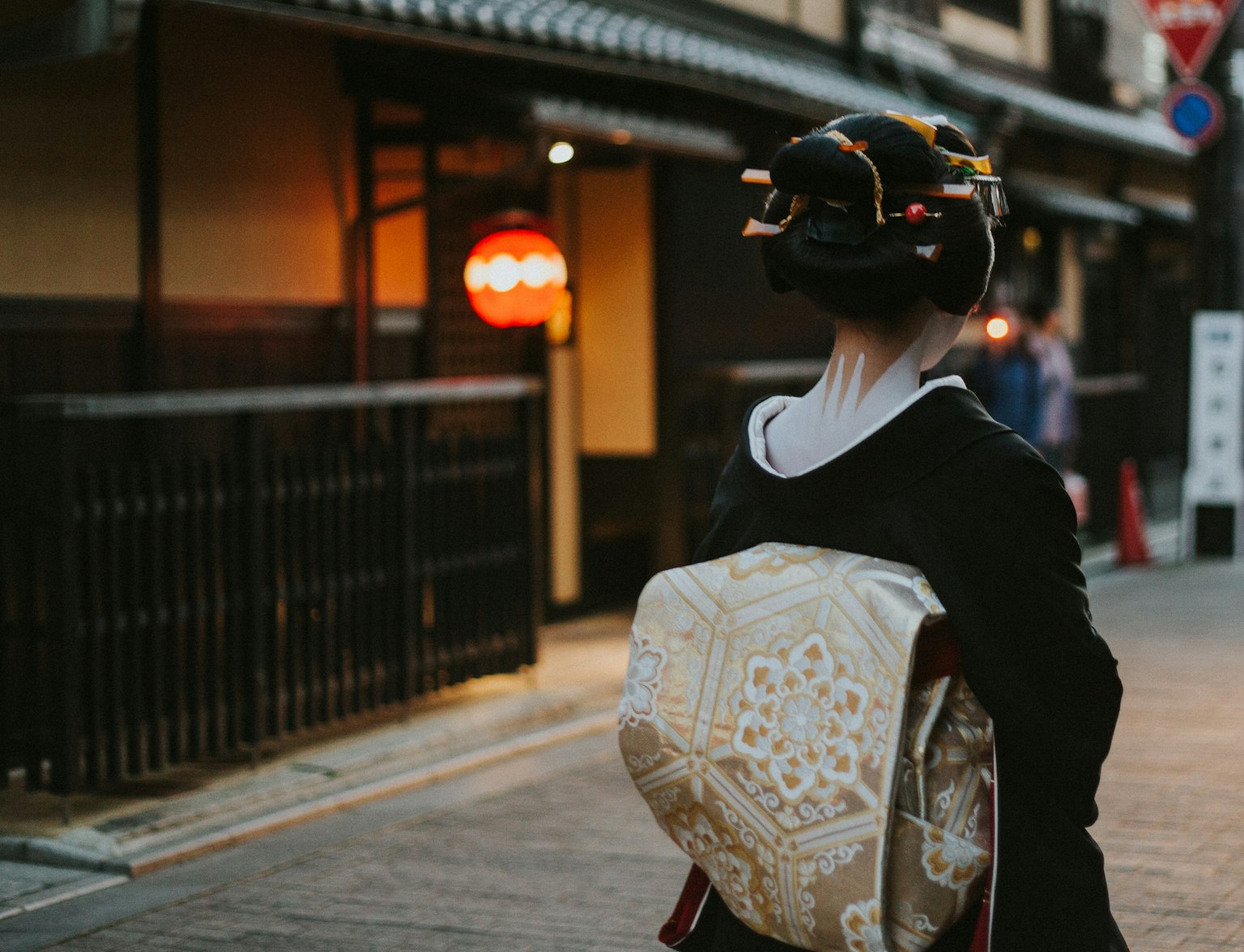
Visit Kiyomizu-dera with this tour.
In the heart of Tokyo's bustling Asakusa district lies Senso-ji, a magnificent temple steeped in history and tradition. As Tokyo's oldest temple, Senso-ji invites visitors to explore its hallowed grounds and immerse themselves in the rich tapestry of Japanese spirituality.
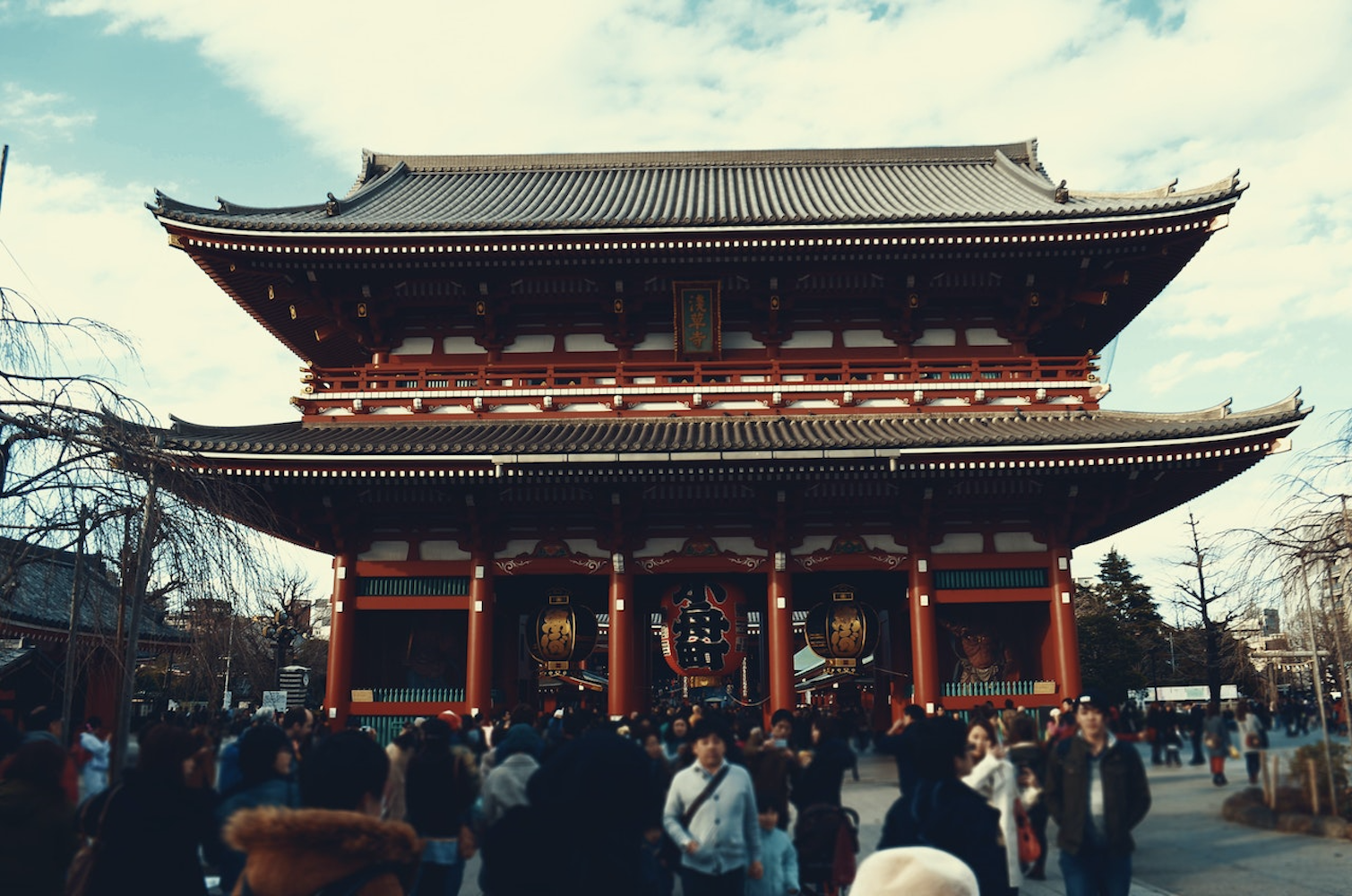
Dating back to 628 AD, Senso-ji's storied past began when two fishermen discovered a statue of the bodhisattva Kannon in the Sumida River. The temple was subsequently built to honor this divine find, and over the centuries, it has grown into a revered place of worship and pilgrimage.
As you walk through the temple grounds, you'll be transported back in time, witnessing the centuries of devotion that have shaped Senso-ji into the timeless treasure it is today.
Your journey to Senso-ji begins at the majestic Kaminarimon Gate, an imposing entrance adorned with a massive paper lantern that has become an iconic symbol of the temple. As you pass through the gate, you'll find yourself on the vibrant Nakamise shopping street, a bustling thoroughfare lined with colorful stalls selling traditional Japanese crafts, souvenirs, and street food.
The lively atmosphere of Nakamise offers a fascinating contrast to the serene spirituality of the temple, providing a unique experience that captures the essence of modern Tokyo.
At the heart of Senso-ji lies the temple's main hall, a striking edifice dedicated to the worship of Kannon, the bodhisattva of compassion. As you step inside, you'll be enveloped by a palpable sense of spirituality that resonates throughout the hall. Take a moment to offer prayers, light incense, or simply bask in the divine presence of Kannon.
Beyond the main hall, explore the temple's five-story pagoda and various other structures that showcase the architectural splendor of Japan's religious heritage. As you wander the serene grounds of Senso-ji, you'll discover the spiritual core of Asakusa district, a timeless sanctuary amidst the ever-changing cityscape of Tokyo.
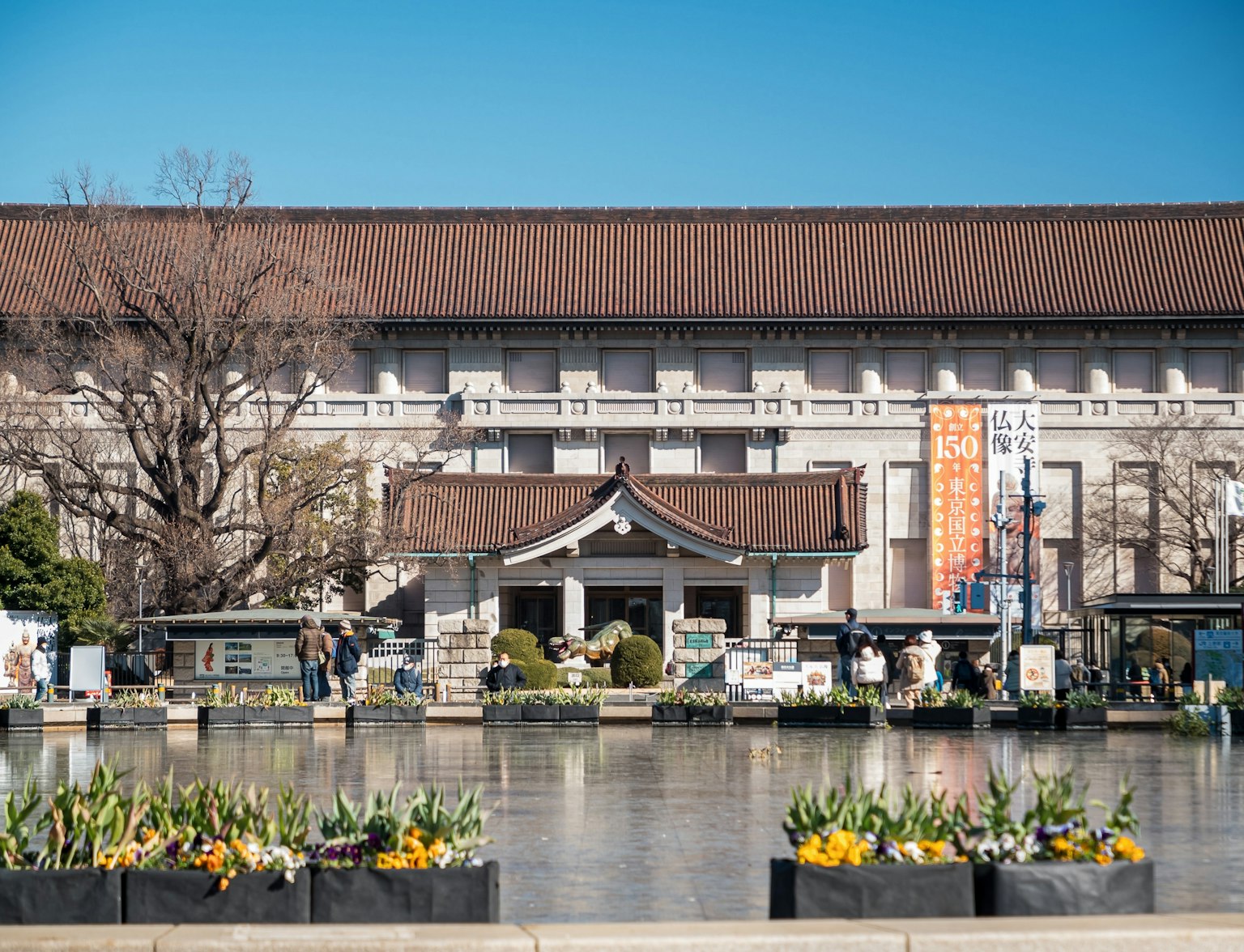
Start the day by visiting Senso-ji Temple.
Nestled at the base of Mount Inari, Fushimi Inari Taisha is a breathtaking Shinto shrine that captivates visitors with its mesmerizing labyrinth of vermilion torii gates. As you explore this enchanting sanctuary, you'll be drawn into a world of mystique, beauty, and divine blessings.
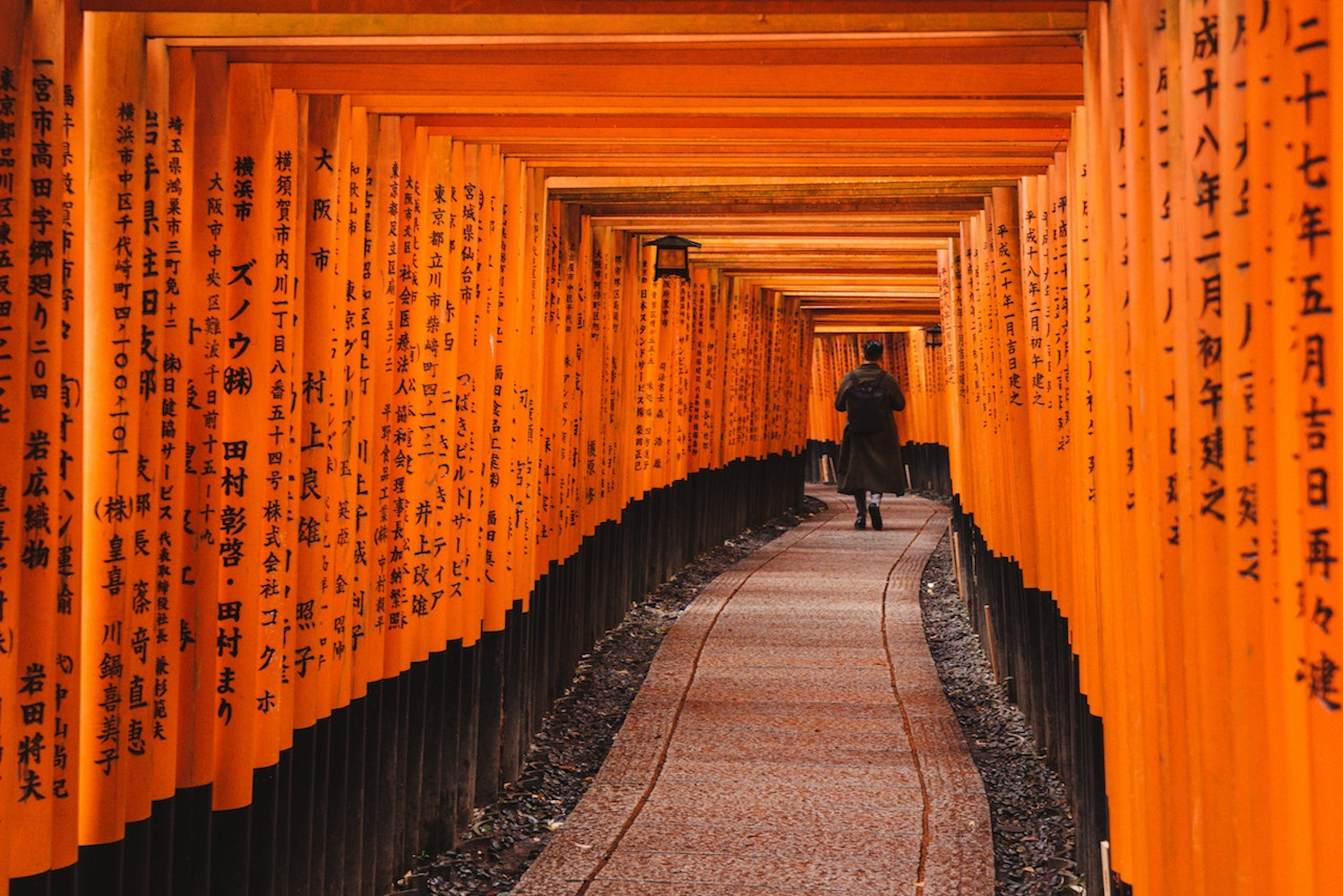
The awe-inspiring torii gates of Fushimi Inari Taisha are its most iconic feature, creating a vibrant and mystical pathway that winds through the verdant forest. Each gate is a testament to the devotion of the shrine's many patrons, who donate them as a symbol of gratitude and prayer for prosperity. As you meander through this captivating labyrinth, you'll be enveloped by the serene atmosphere and mesmerizing beauty that define Fushimi Inari Taisha.
Fushimi Inari Taisha is dedicated to Inari, the Shinto god of rice, agriculture, and prosperity. As the patron deity of merchants and businesses, Inari is revered by countless devotees who seek divine blessings for success and abundance. Scattered throughout the shrine's grounds, you'll find statues of foxes, the messengers of Inari, which are believed to protect the shrine and its visitors.
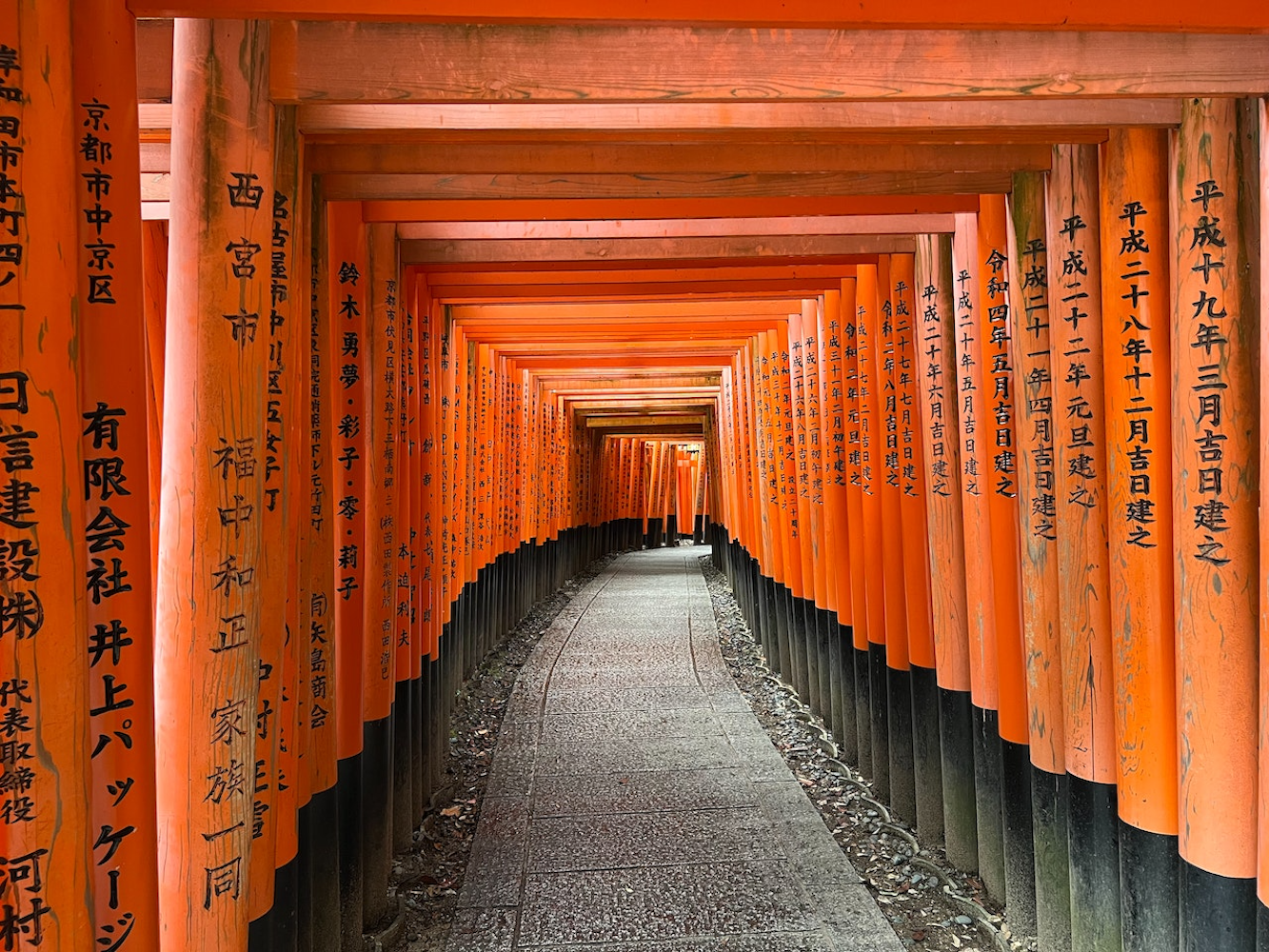
Take a moment to learn about the rich history and legends surrounding Inari and the shrine, deepening your appreciation for the spiritual significance of this enchanting sanctuary.
Beyond the torii gates, the shrine's sprawling grounds encompass a network of scenic mountain trails that offer stunning views of Kyoto and the surrounding landscape. As you ascend the mountain, you'll pass by numerous smaller shrines and teahouses, providing ample opportunities to rest and reflect on the divine beauty of your surroundings.
At the summit, savor the breathtaking vistas and the sense of accomplishment that comes with completing your pilgrimage to this sacred peak.
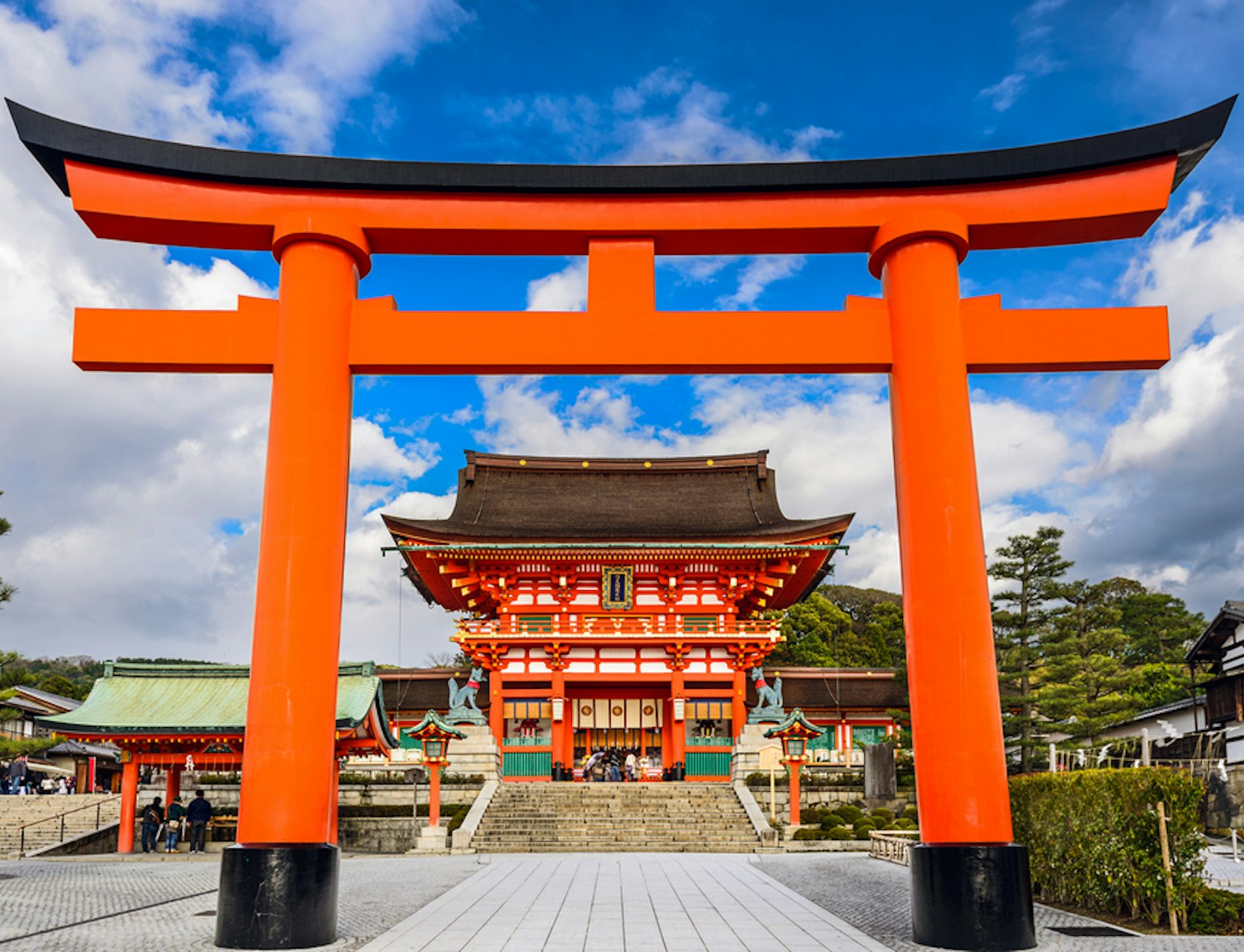
Visit Fushimi Inari Shrine and other landmarks in Kyoto.
In the ancient city of Nara lies Todai-ji, a majestic temple renowned for its colossal bronze statue of the Great Buddha and its architectural grandeur. As you explore the hallowed grounds of this UNESCO World Heritage Site, you'll be awestruck by the immense scale and spiritual presence that define Todai-ji.
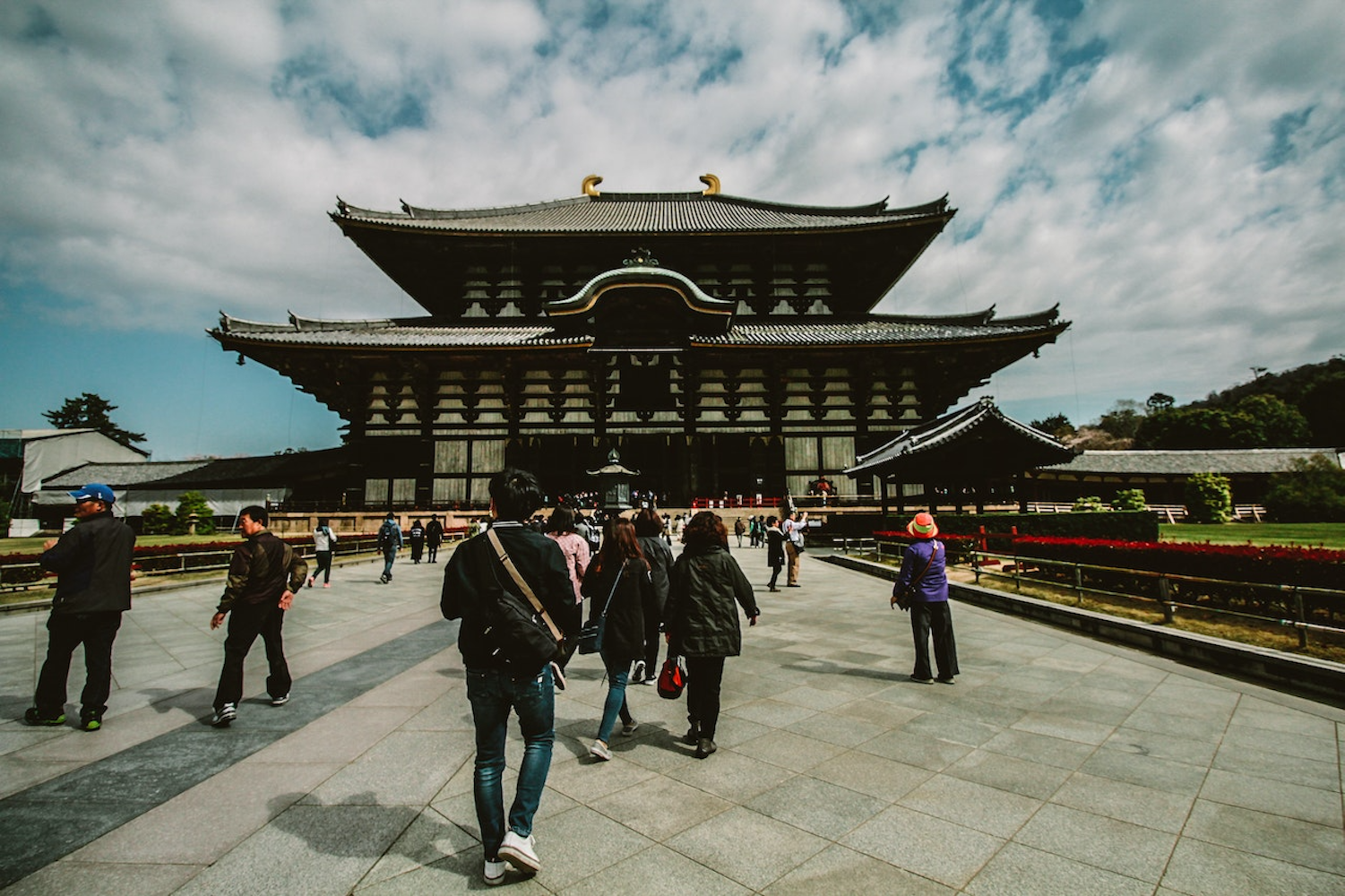
Founded in the 8th century by Emperor Shomu, Todai-ji was once the head temple of all provincial Buddhist temples in Japan. Over the centuries, the temple has withstood fires, wars, and natural disasters, emerging as a symbol of resilience and a testament to Japan's rich spiritual heritage. As a UNESCO World Heritage Site, Todai-ji stands as an enduring reminder of the country's deep connection to Buddhism and its profound impact on Japanese culture.
The centerpiece of Todai-ji is the awe-inspiring Great Buddha Hall, the largest wooden building in the world. Within its walls rests the colossal bronze statue of the Great Buddha, known as Daibutsu, which measures over 49 feet (15 meters) in height and weighs approximately 550 tons.
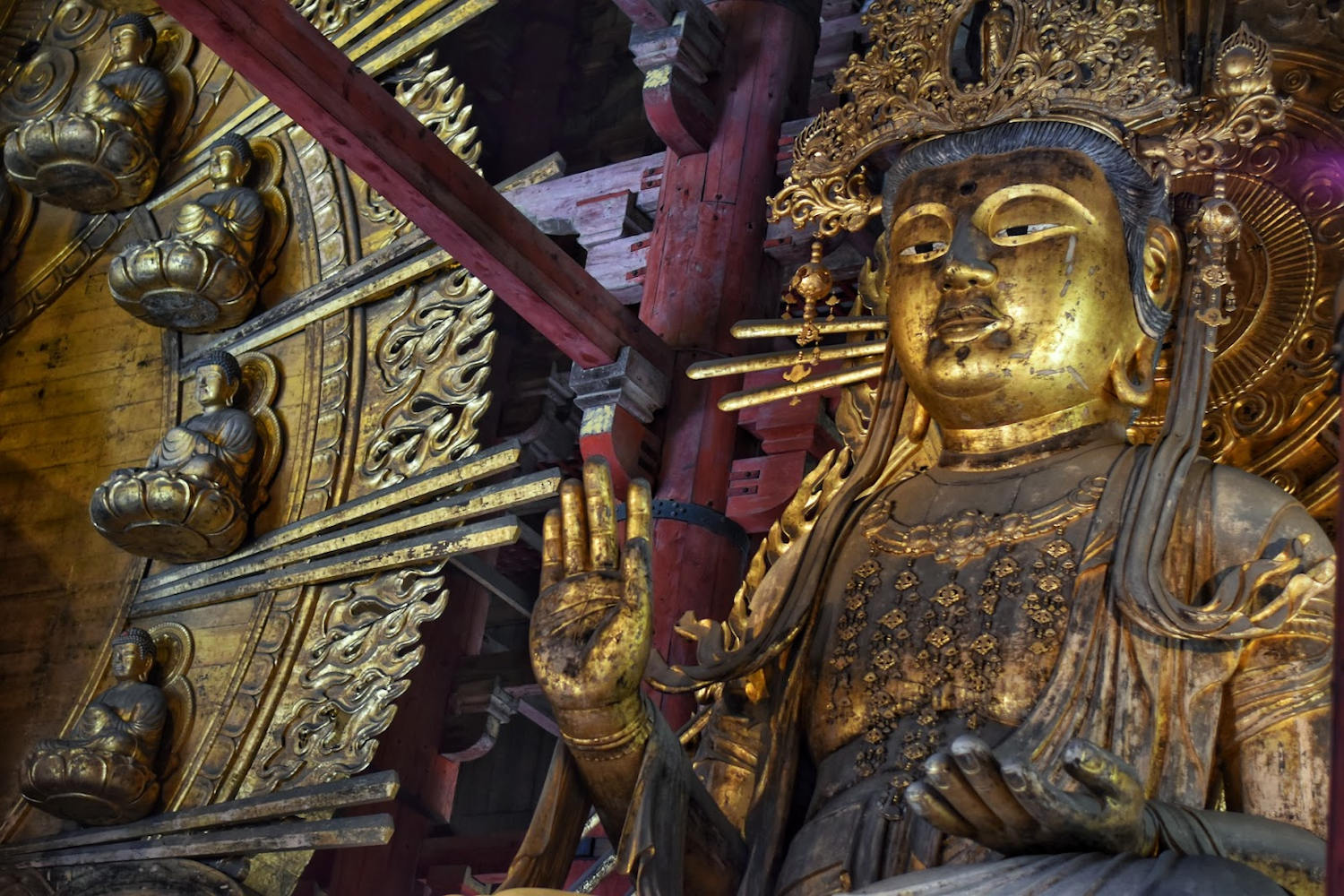
As you stand before this towering figure, you'll be struck by the sheer scale and majesty of the Great Buddha and the remarkable craftsmanship that brought it to life.
Surrounding Todai-ji is the enchanting Nara Deer Park, home to over 1,000 friendly deer that are believed to be sacred messengers of the gods. As you roam the park's expansive grounds, you'll have the opportunity to interact with these gentle creatures, feeding them deer crackers and basking in the serene atmosphere of this idyllic haven.
Delight in the charm and grandeur of Todai-ji as you explore its storied past, marvel at the colossal Great Buddha, and wander the enchanting Nara Deer Park. Let the temple's immense scale and profound spirituality leave a lasting impression on your journey through Japan's sacred landscape.
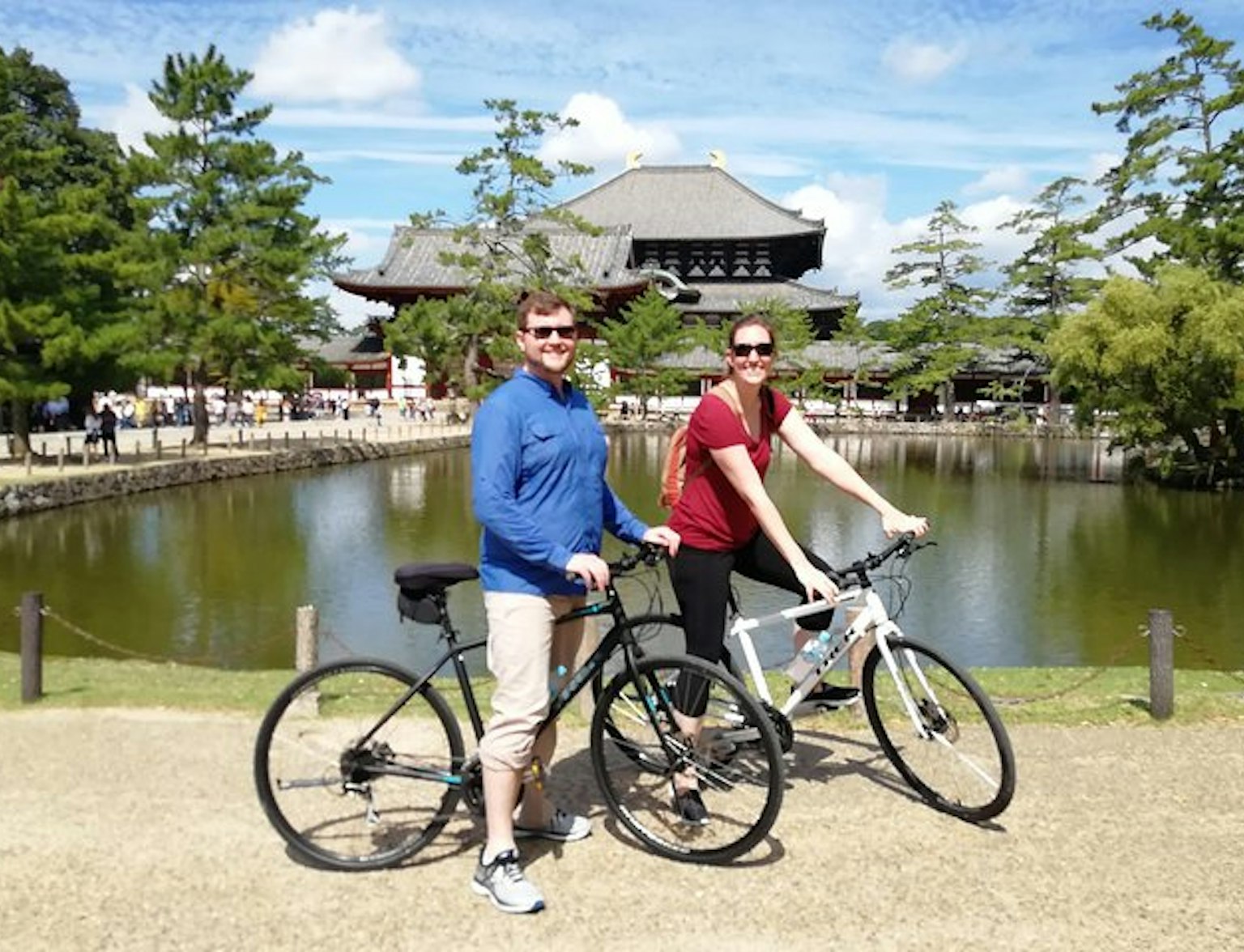
Cycle through Nara's parks and temples.
Tucked away in the heart of Tokyo, Meiji Shrine offers a serene escape from the city's fast-paced energy. As you explore this tranquil oasis, you'll be captivated by the rich history, elegant Shinto architecture, and vibrant cultural events that make Meiji Shrine a must-visit destination.
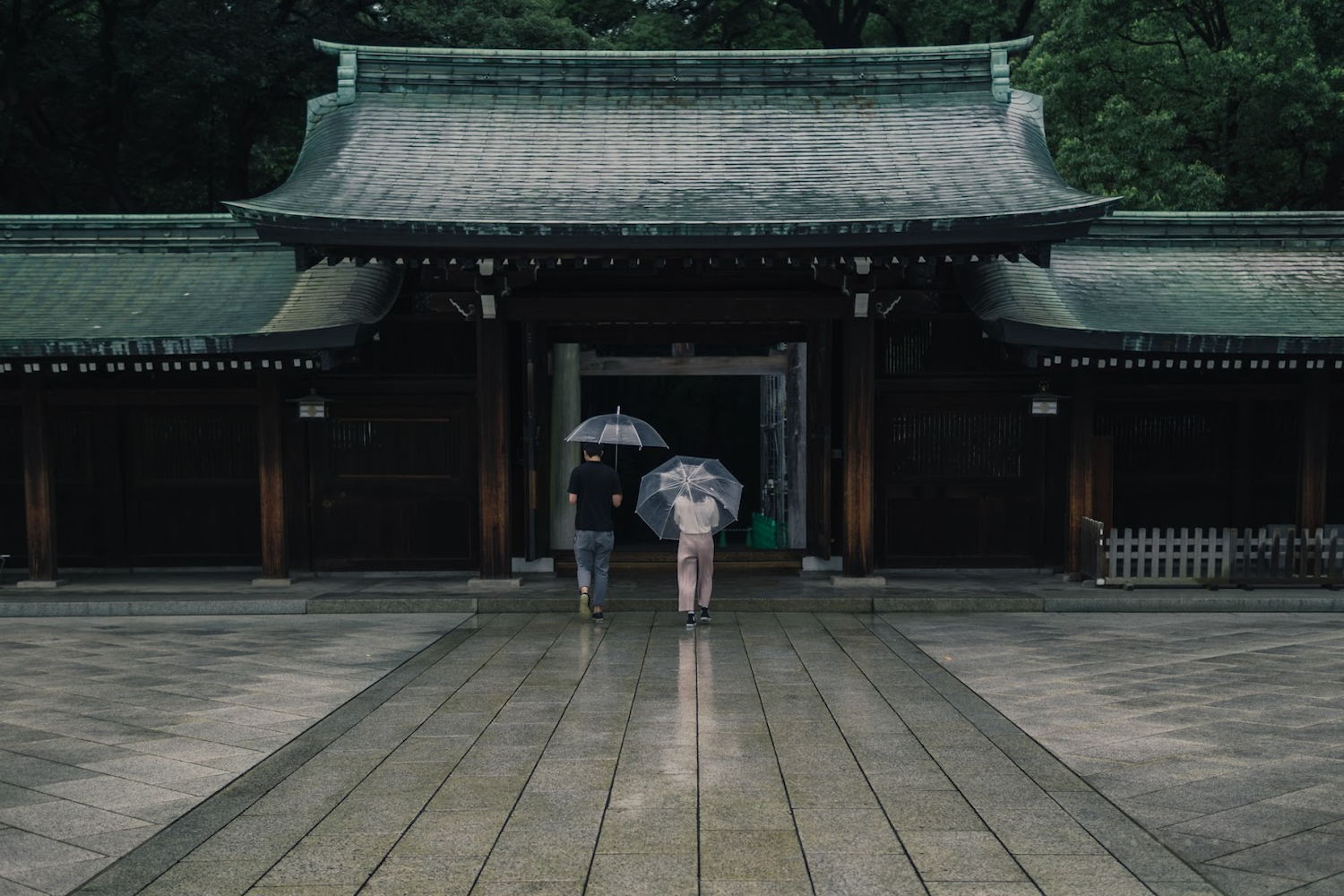
Dedicated to the deified spirits of Emperor Meiji and Empress Shoken, Meiji Shrine is a testament to the enduring legacy of these revered figures. As you stroll through the shrine's peaceful grounds, take a moment to reflect on the profound impact Emperor Meiji and Empress Shoken had on Japan's modernization, culture, and society during the Meiji Restoration.
Meiji Shrine is a masterpiece of traditional Shinto architecture, its graceful wooden buildings nestled within a lush, urban forest. As you wander the winding paths and explore the shrine's many structures, you'll be struck by the harmony between the natural surroundings and the elegant craftsmanship that defines Meiji Shrine.
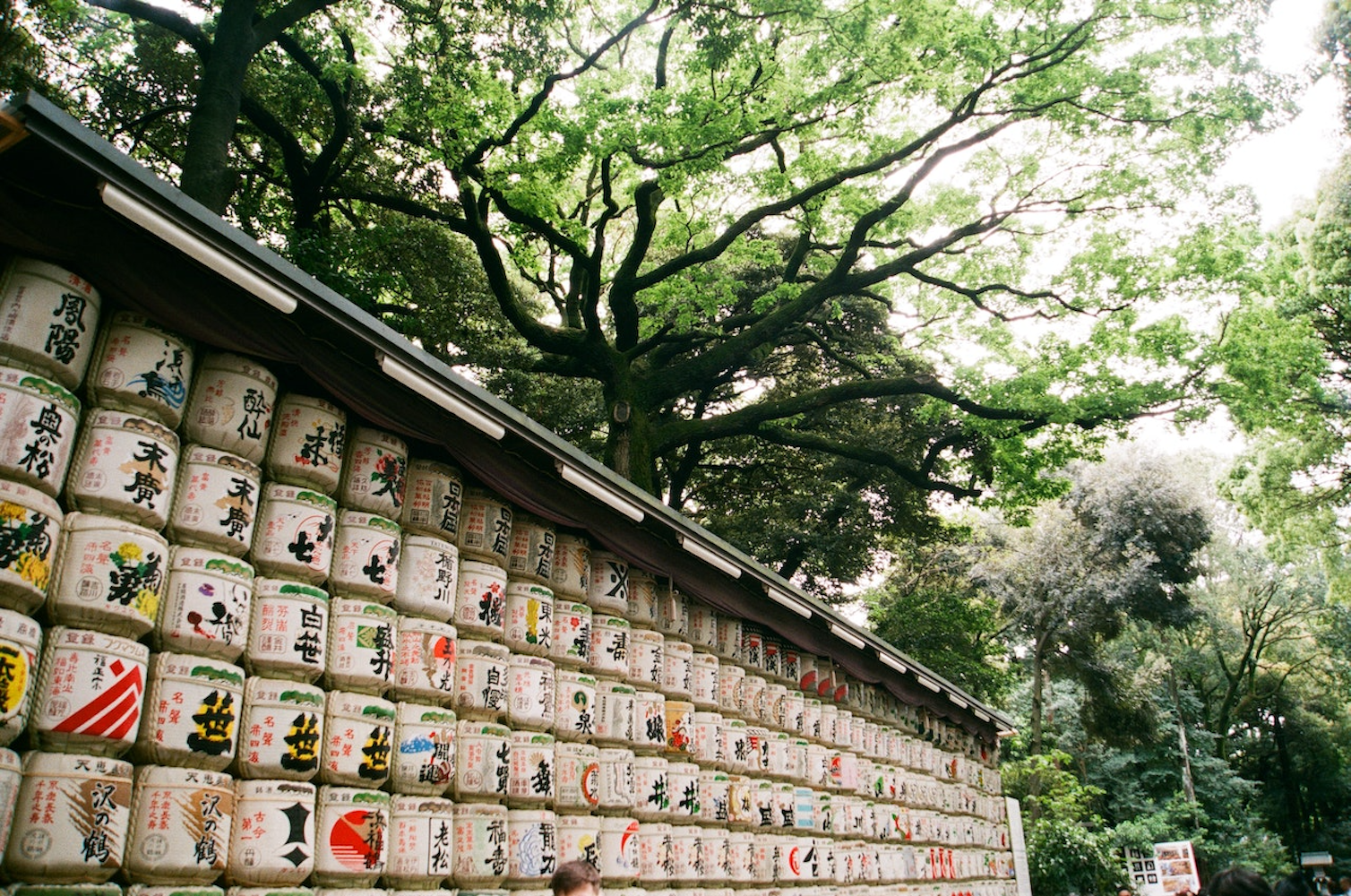
The expansive forest, which comprises over 170,000 trees from across Japan, provides a serene and calming environment, inviting you to relax and soak in the tranquil atmosphere.
Meiji Shrine is not only a place of worship but also a vibrant cultural hub, hosting various events and ceremonies throughout the year. From traditional Shinto weddings to seasonal festivals, there is always something to experience at Meiji Shrine. Be sure to check the shrine's calendar during your visit, as you may have the opportunity to witness a unique and memorable event that offers a glimpse into Japan's rich cultural heritage.
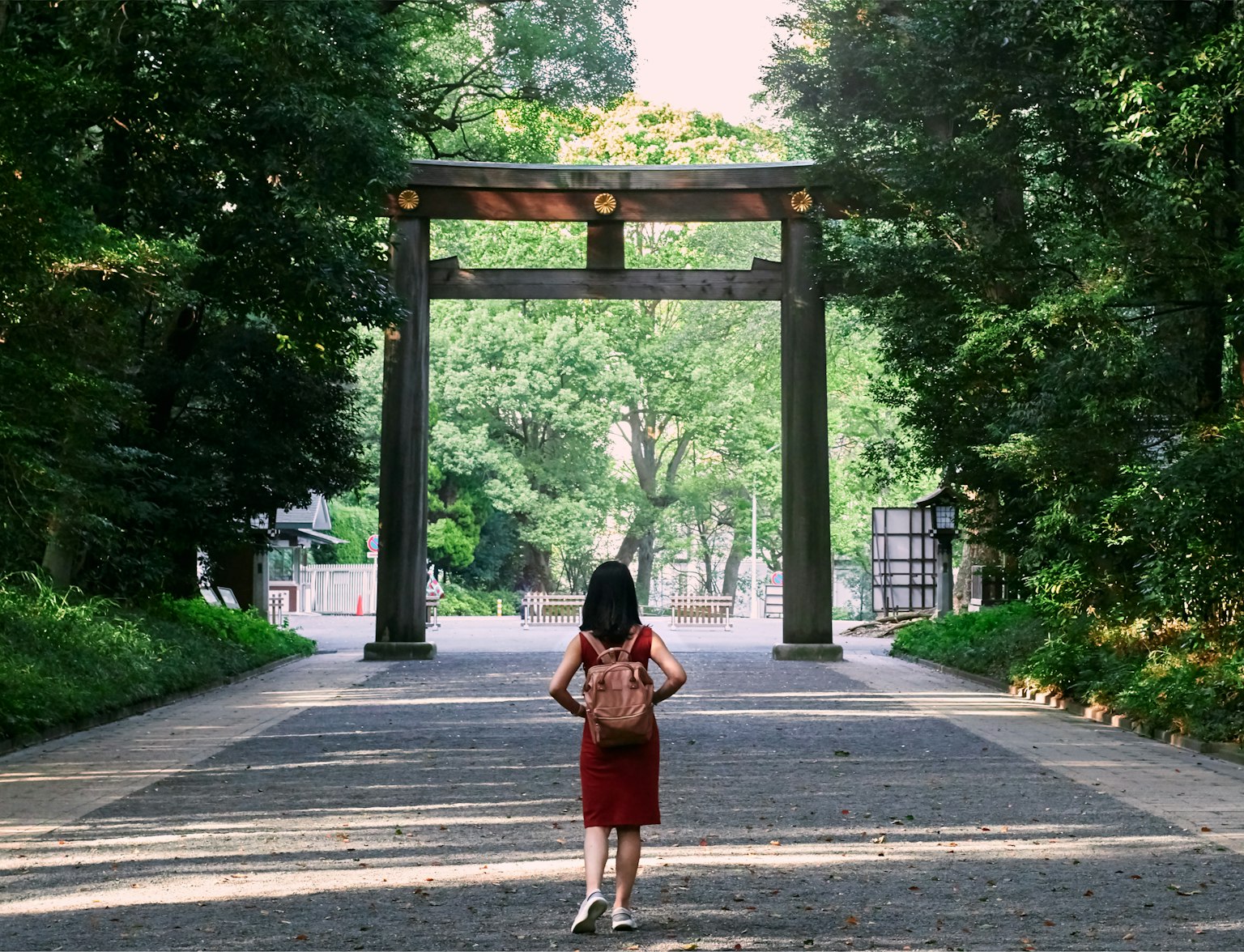
Discover this quiet gem in bustling Tokyo.
Located on the picturesque Miyajima Island, Itsukushima Shrine is a breathtaking sanctuary that appears to float on the tranquil waters of the Seto Inland Sea. As you explore this ethereal retreat, you'll be enchanted by the iconic torii gate, rich history, and the island's unique attractions.
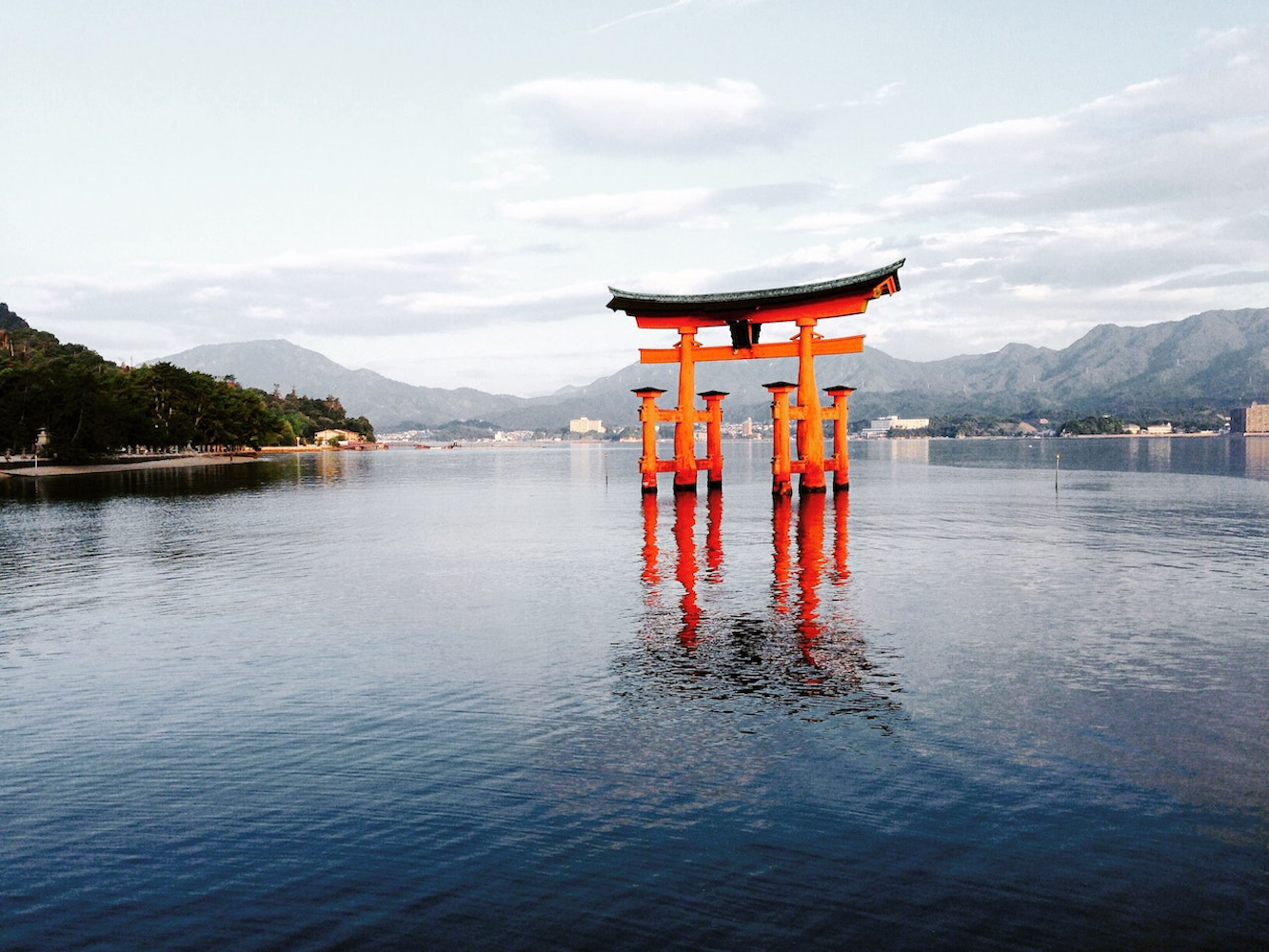
The most striking feature of Itsukushima Shrine is its vermilion torii gate, which appears to float on the water during high tide. This magnificent structure has become a symbol of the shrine and is one of Japan's most iconic and photographed landmarks. As you approach the shrine by boat or view it from afar, you'll be captivated by the serene beauty of the gate and its enchanting surroundings.
The shrine itself is a stunning example of traditional Shinto architecture, with its vibrant red pillars and walkways that hover above the water's surface, creating a harmonious connection with the natural landscape.
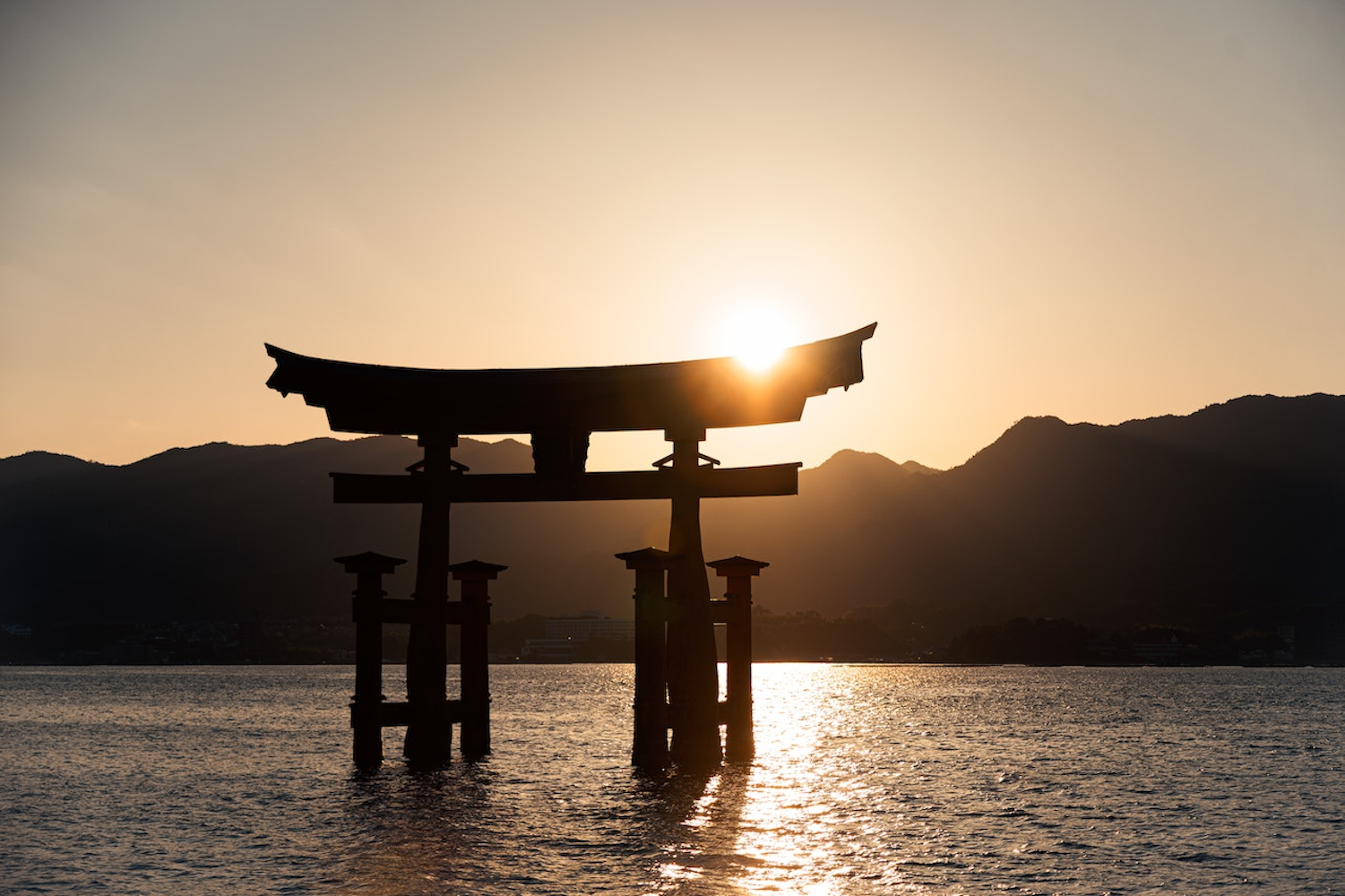
Founded in the 6th century, Itsukushima Shrine has a storied history steeped in legend and divine connections. Dedicated to the three daughters of the Shinto deity Susanoo, the shrine has long been a place of worship and pilgrimage for those seeking blessings from the gods. Delve into the shrine's rich past and discover the fascinating stories and legends that have shaped this heavenly retreat.
Miyajima Island, also known as Itsukushima, is home to more than just the iconic shrine. As you explore the island, you'll encounter a variety of unique attractions, from the friendly deer that roam the streets to mouthwatering local delicacies like momiji manju and oysters.
Venture up Mount Misen, the island's highest peak, for breathtaking panoramic views of the Seto Inland Sea, or stroll through the charming streets of the island's historic town, where you can shop for souvenirs, enjoy local cuisine, and experience the warm hospitality of Miyajima's residents.
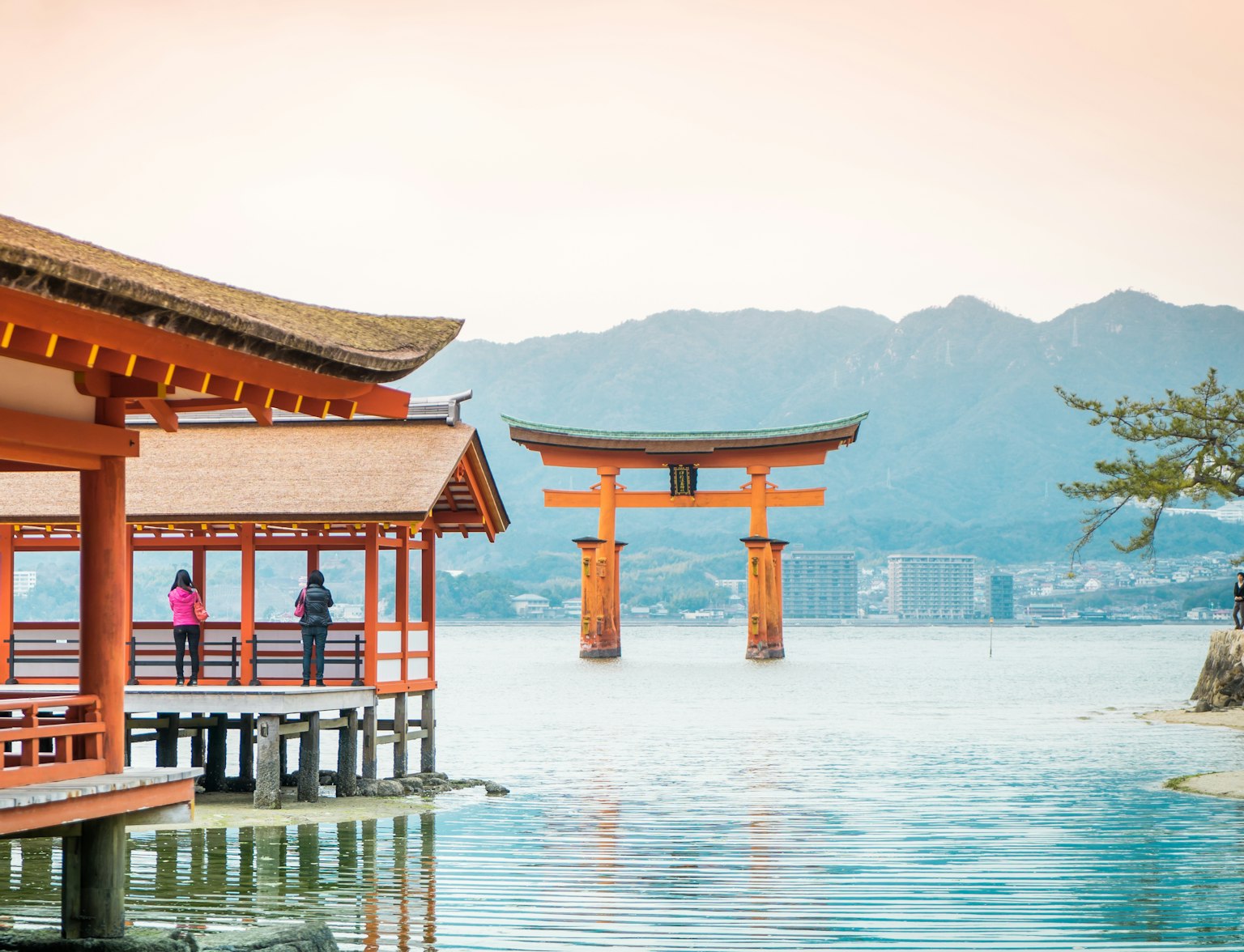
From Hiroshima, take a scenic ferry ride to the serene Miyajima.
Nestled in the lush mountains of Nikko, Toshogu Shrine is a dazzling testament to Japan's rich artistic heritage and the legacy of one of its most influential leaders. As you explore this UNESCO World Heritage Site, you'll be captivated by the intricate artistry, fascinating history, and the many treasures that make Toshogu Shrine a must-visit destination.
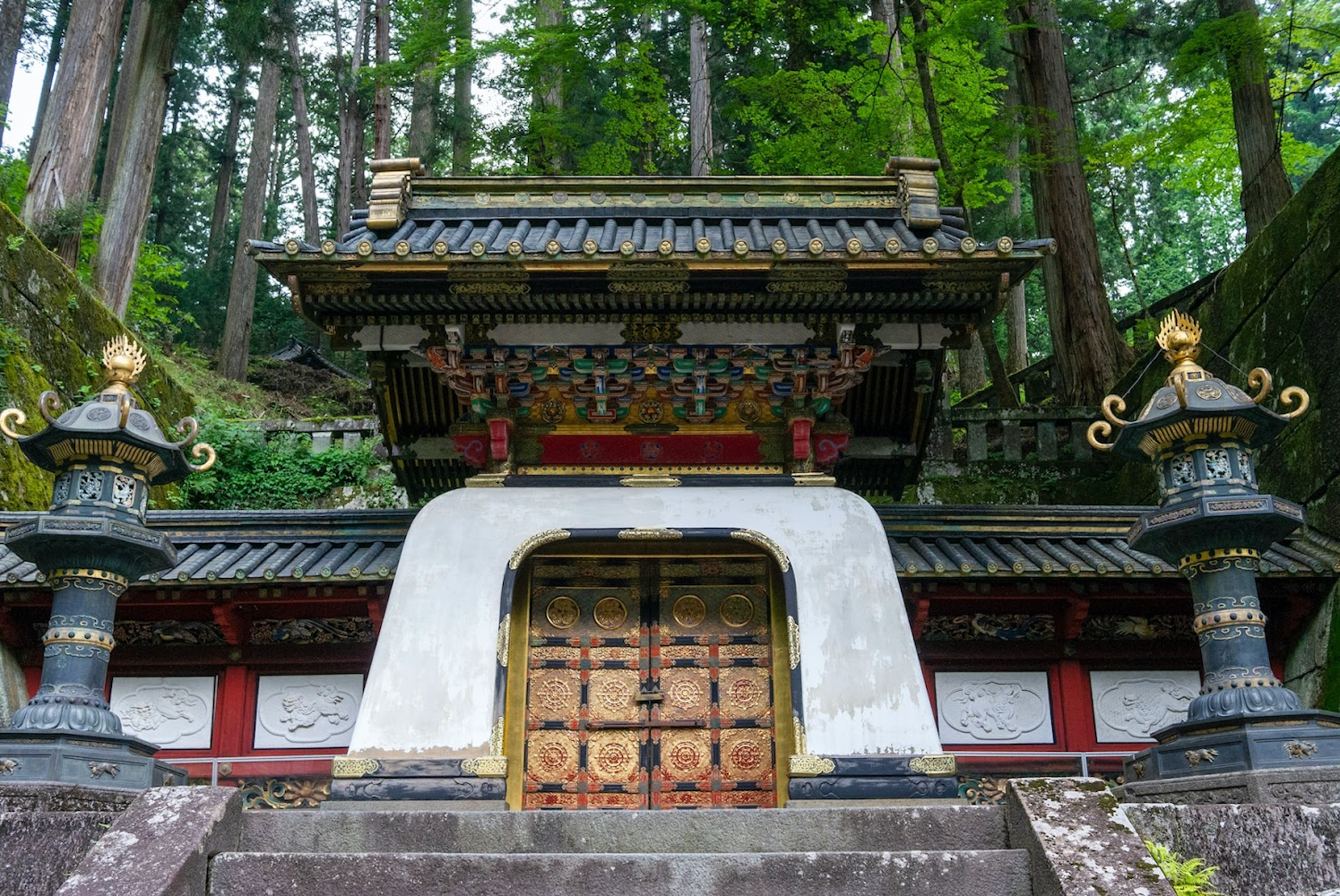
Toshogu Shrine is the final resting place of Tokugawa Ieyasu, the founder of the Tokugawa Shogunate, which ruled Japan for over 250 years. As you delve into Ieyasu's life and his contributions to Japanese history, you'll gain a deeper appreciation for the grand mausoleum and the profound impact of his leadership on the country's development.
The breathtaking artistry of Toshogu Shrine is perhaps best exemplified by the Yomeimon Gate, a masterpiece of intricate wood carvings and vibrant colors that has been dubbed the "Sunset Gate" for its awe-inspiring beauty. As you explore the shrine's many structures, you'll encounter an array of lavish decorations, from ornate carvings and gilded accents to stunning paintings and sculptures.
Be sure to keep an eye out for the famous carving of the "Three Wise Monkeys," a symbol of the Buddhist principle to "see no evil, hear no evil, speak no evil," as well as the whimsical "Sleeping Cat" that guards the entrance to Ieyasu's tomb.
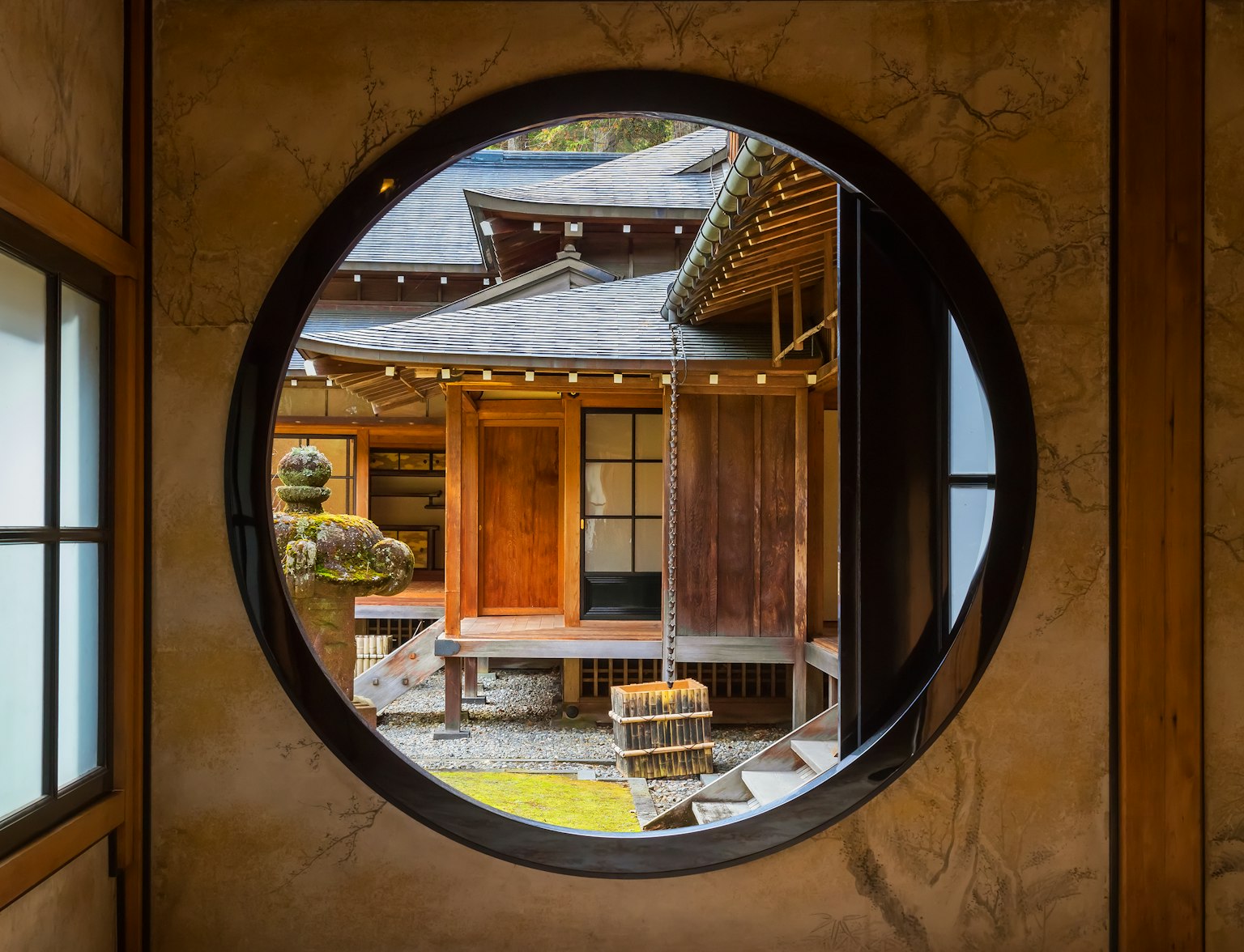
Perfect for a Toshogu Shrine tour.
Kinkaku-ji, or the Golden Pavilion, is a mesmerizing sight to behold, its shimmering gold-leaf exterior reflecting the sunlight and casting a serene glow across the surrounding landscape. As you explore this iconic Kyoto temple, you'll be captivated by its ethereal beauty, fascinating history, and calming Zen gardens that envelop it.
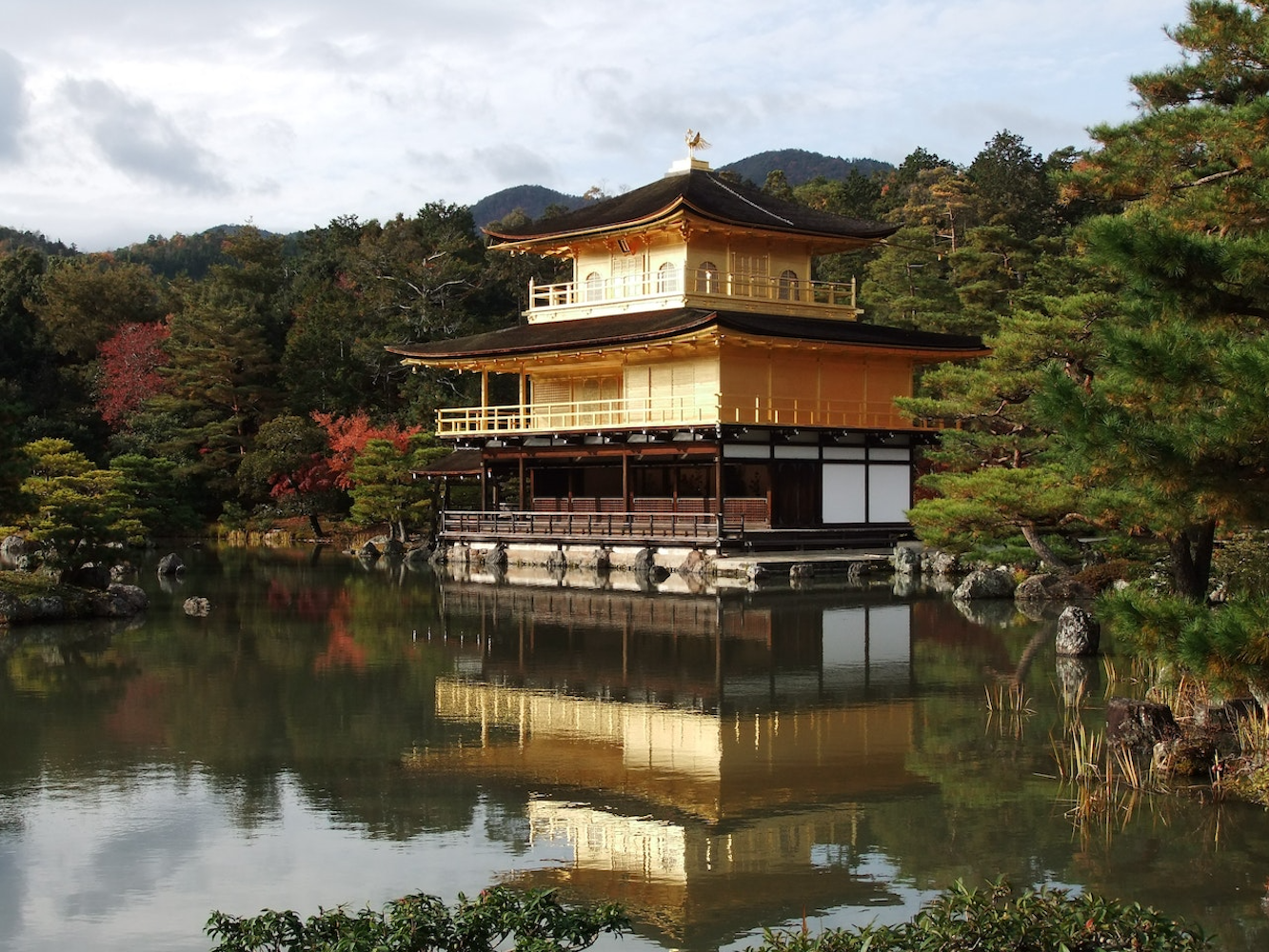
The centerpiece of Kinkaku-ji is the magnificent Golden Pavilion, a three-story structure whose top two floors are adorned with shimmering gold leaf. This opulent design is not only visually stunning but also symbolizes the purity and enlightenment of the Buddha. As you gaze upon the pavilion's glistening exterior and its reflection on the tranquil waters of the pond below, you'll be transported to a realm of pure serenity.
Kinkaku-ji has a storied past that includes a literary connection to the famous Japanese author Yukio Mishima, whose novel "The Temple of the Golden Pavilion" is inspired by the temple's history.
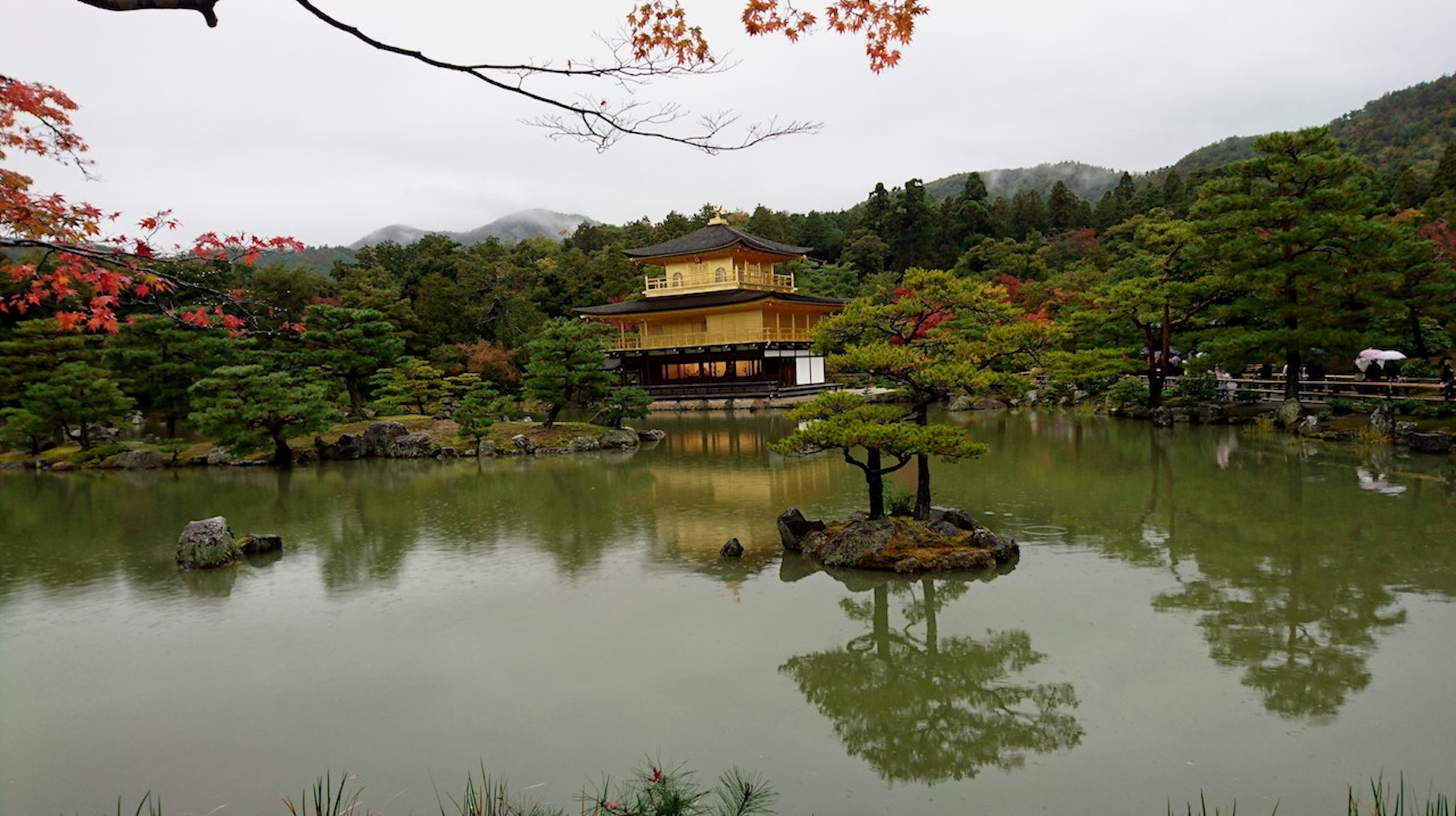
Delve into the temple's tumultuous past, which includes the destruction and reconstruction of the pavilion due to arson in 1950, and gain a deeper appreciation for the resilience and enduring beauty of this iconic structure.
The enchanting beauty of Kinkaku-ji extends beyond the Golden Pavilion to the meticulously designed Zen gardens that surround it. As you stroll through the tranquil grounds, you'll encounter an array of carefully arranged rocks, manicured trees, and moss-covered paths that evoke a sense of calm and contemplation. Pause for a moment to absorb the peaceful atmosphere and appreciate the harmony between the natural and built environment.
Experience the ethereal beauty and rich history of Kinkaku-ji, and let the glistening Golden Pavilion, fascinating stories, and serene Zen gardens create a lasting impression on your journey through Japan's sacred landscape.
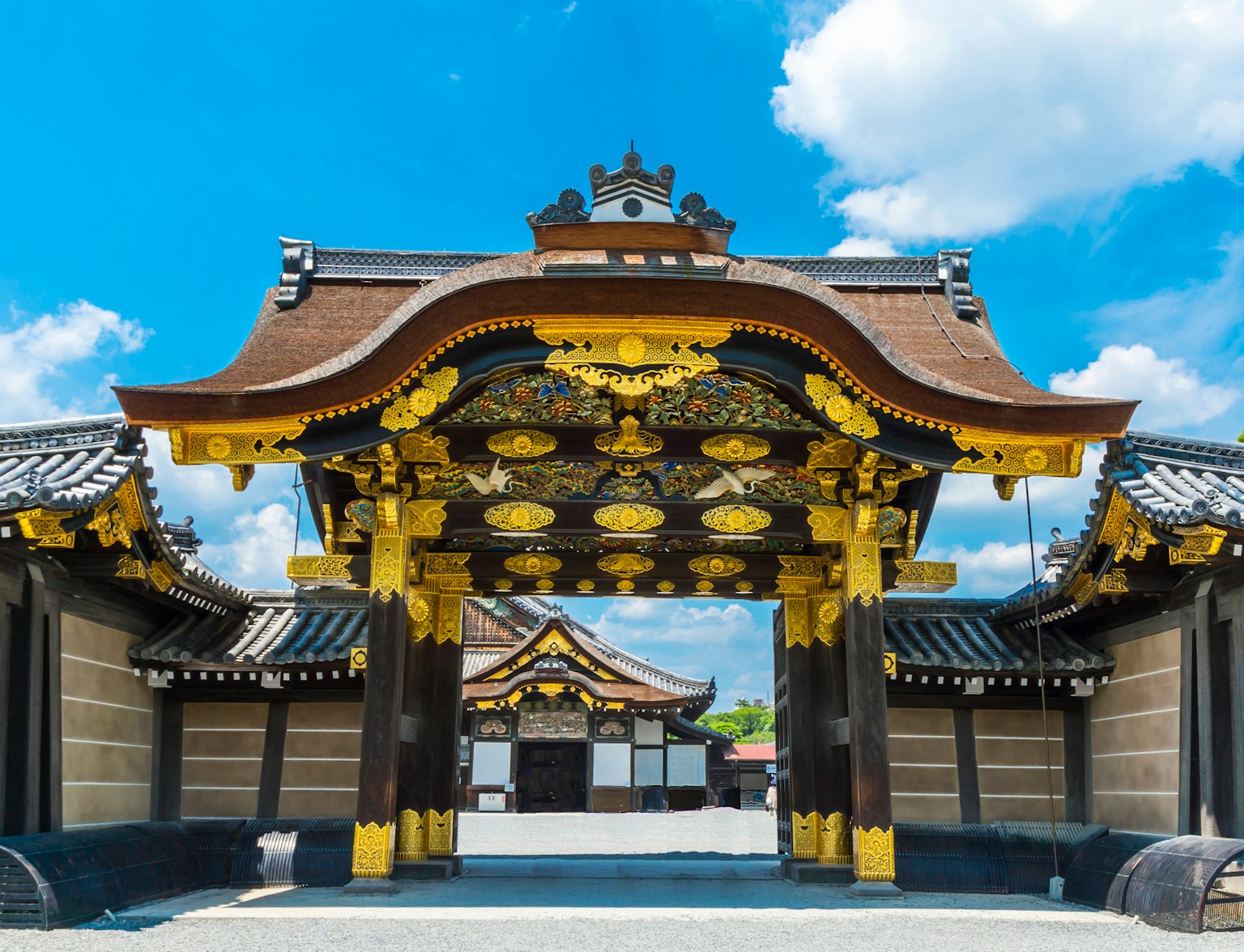
Marvel at Kinkaku-ji's beautiful glow across surrounding landscape.
Perched on a hillside in the charming coastal town of Kamakura, Hase-dera is a sanctuary of compassion that offers breathtaking ocean vistas and a serene atmosphere. As you explore this sacred haven, you'll be captivated by the divine presence of Kannon, the goddess of mercy, and the temple's lush gardens and treasured artifacts.
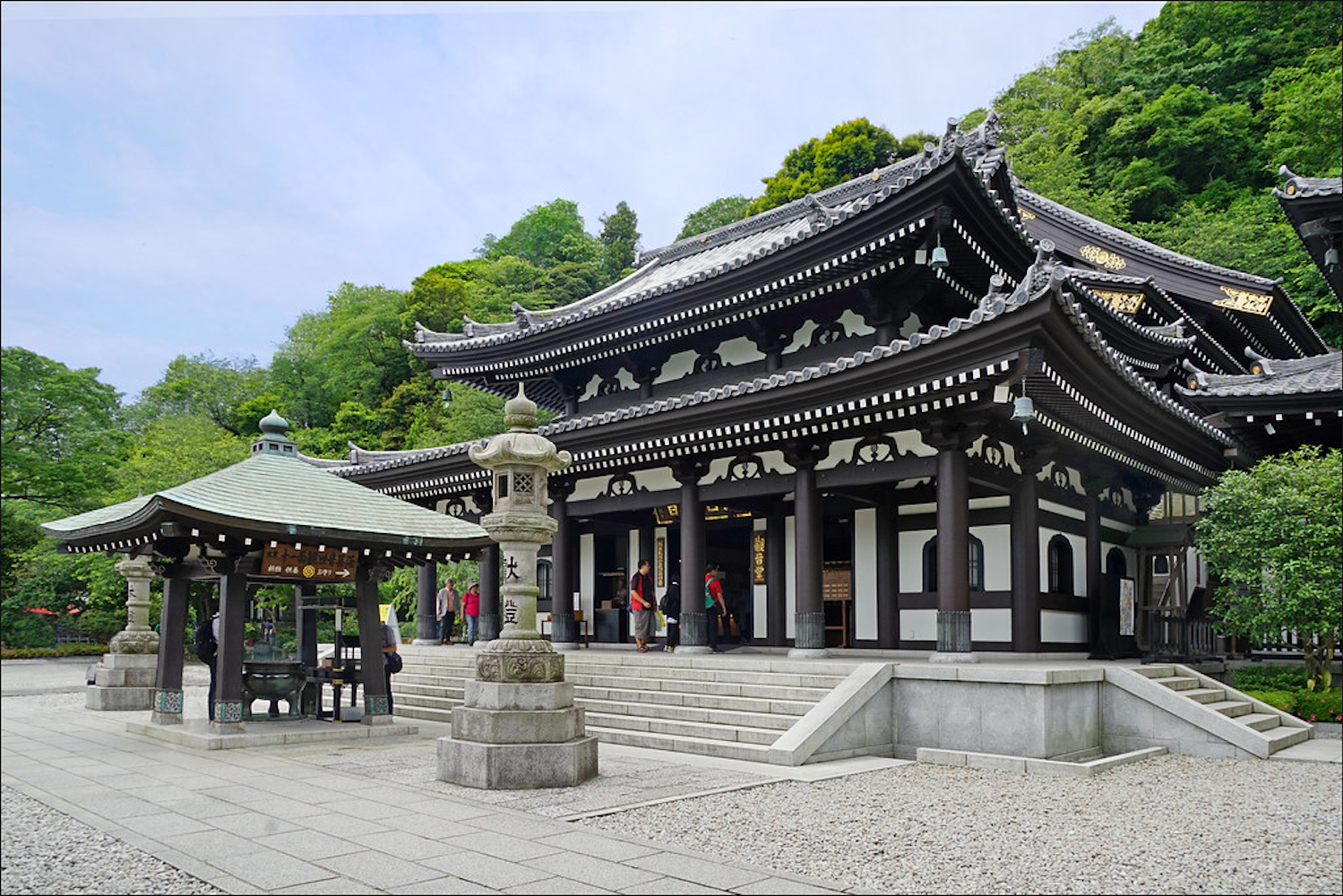
Image Credit: Jean-Pierre Dalbéra
The enchanting beauty of Hase-dera is heightened by its hillside location, which offers sweeping views of the surrounding countryside and the shimmering waters of Sagami Bay. As you ascend the temple's stone steps, you'll be greeted by a panorama of natural splendor, creating a harmonious connection between the spiritual and the earthly realms.
Hase-dera is dedicated to Kannon, the goddess of mercy and compassion, whose divine presence is said to bring solace to those who seek her guidance. As you explore the temple grounds, you'll encounter several manifestations of Kannon, each embodying a different aspect of her compassionate nature. Experience the divine energy of this beloved deity and allow her gentle presence to guide you on your spiritual journey.
One of Hase-dera's most treasured artifacts is the revered eleven-headed Kannon statue, a towering wooden sculpture that is considered one of Japan's largest and most important representations of the goddess. As you stand in awe of this impressive figure, you'll be struck by the intricate craftsmanship and the deep sense of devotion that it embodies.
The temple's lush gardens are another highlight, featuring vibrant seasonal blooms, tranquil ponds, and an array of stone statues that invite quiet contemplation. Wander through the verdant pathways and immerse yourself in the serene beauty of this sacred oasis.
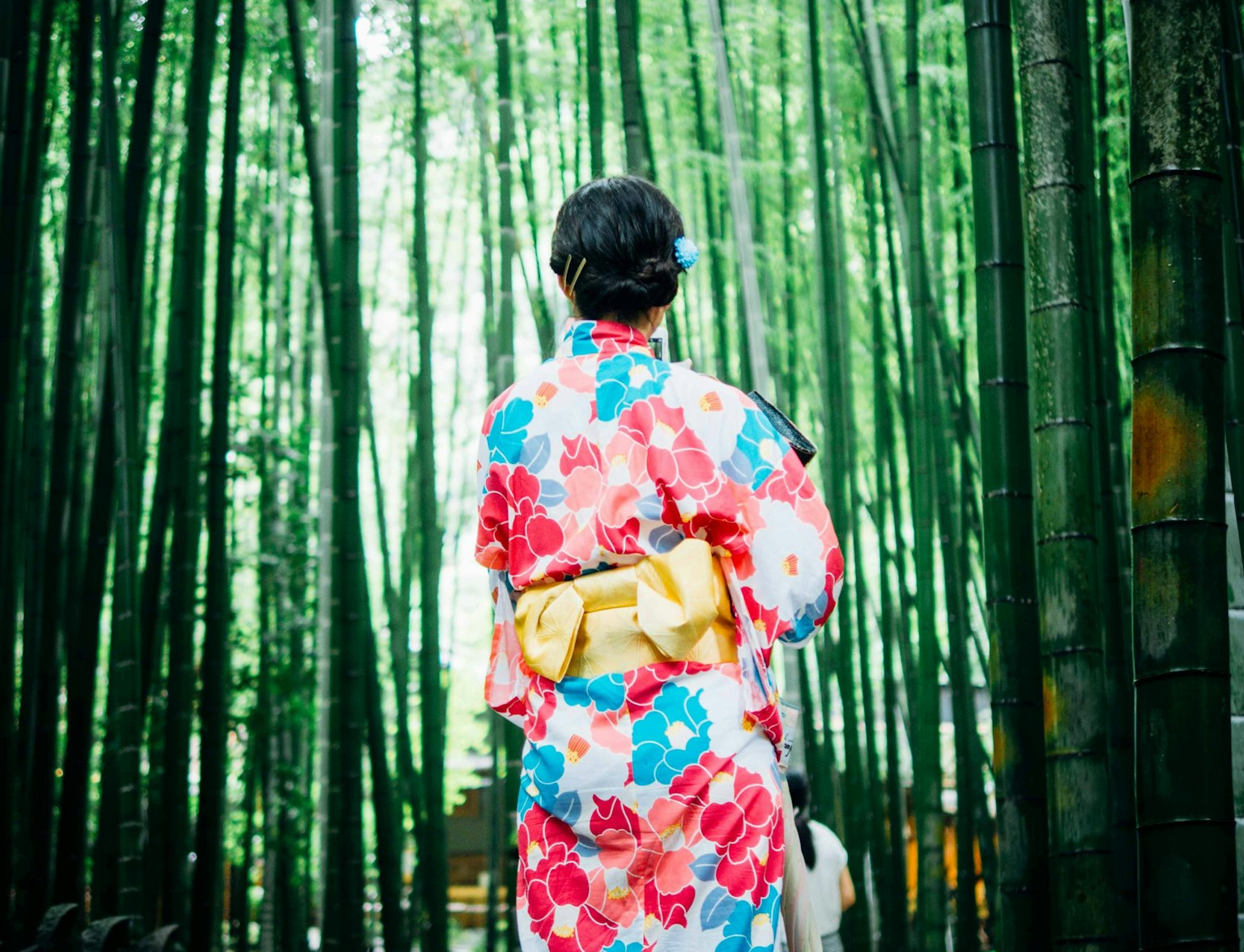
Visit Hase-dera with this unique experience.
Izumo Taisha, one of Japan's most ancient and revered Shinto shrines, stands as a testament to the deep-rooted spirituality and history of the land. As you explore this time-honored home of the gods, you'll gain insight into the shrine's importance in Shinto belief, marvel at its distinct architectural features, and discover the rich cultural and natural attractions of Shimane Prefecture.
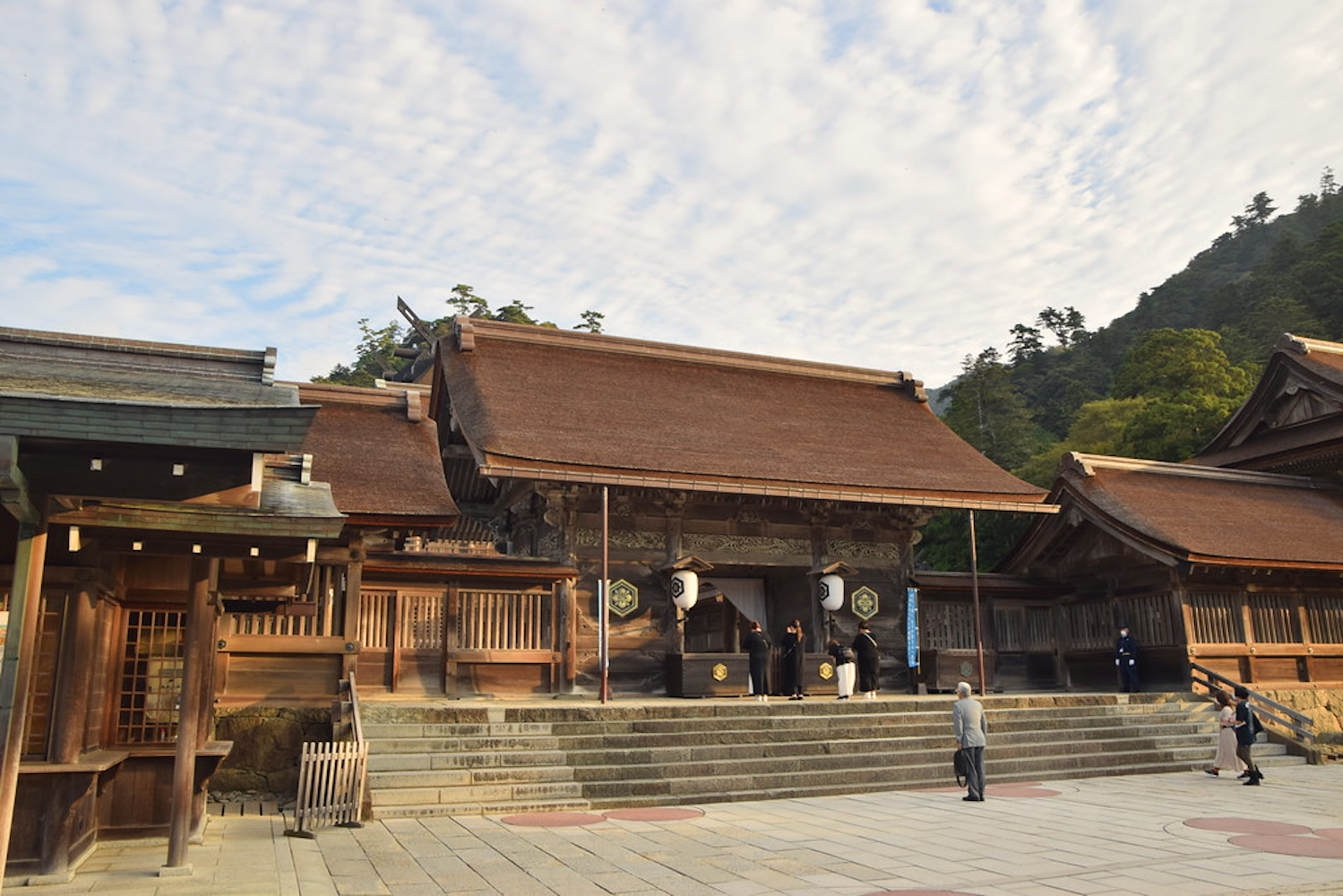
Image Credit: Raita Futo
Izumo Taisha holds a special place in the Shinto faith as the dwelling of Okuninushi, the god of nation-building, farming, and business. The shrine is also significant for its role in the ancient Izumo mythology, which tells of the gods gathering at Izumo Taisha each year to discuss the fate of humans. As you delve into the shrine's history and spiritual significance, you'll gain a deeper appreciation for its revered status and the role it has played in shaping Japan's cultural heritage.
The shrine boasts a unique architectural style known as "Taisha-zukuri," characterized by its massive pillars, extensive use of natural materials, and the striking "Chigi" or forked roof finials. This ancient design offers a glimpse into the architectural traditions of early Japan and adds to the shrine's enigmatic allure.
Izumo Taisha is also known for the annual Kamiari-zuki festival, a month-long celebration when the gods are believed to gather at the shrine. This sacred event features a variety of rituals, performances, and processions that showcase the rich spiritual and artistic traditions of the region.
Japan's rich tapestry of temples and shrines offers a captivating journey through its spiritual heritage, architectural wonders, and breathtaking landscapes. As you explore these 10 must-visit sacred sites, from the serene Kiyomizu-dera overlooking Kyoto to the ancient Izumo Taisha, the time-honored home of the gods, you'll be immersed in a world of divine beauty, history, and cultural treasures.
Each temple and shrine holds unique stories and experiences that will leave you with a profound appreciation for Japan's timeless spirituality and enchanting allure. So embark on this unforgettable pilgrimage, and let the sacred spaces of Japan inspire your heart, mind, and soul.
